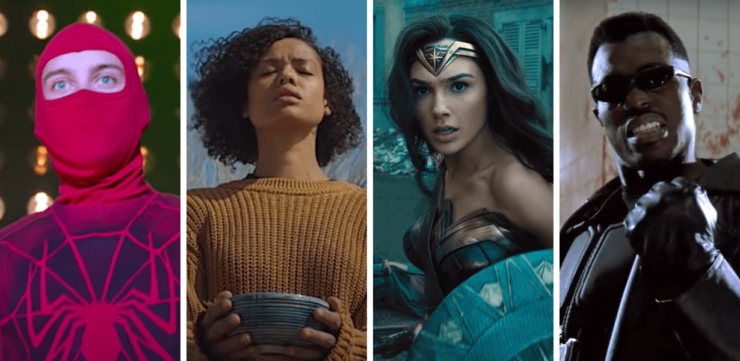We’re about two decades into an era that history will remember as That Time Humans Demanded At Least Four Comic Book Movies A Year. (I’m guessing this era will be remembered for other things, too, but I’m trying to stay positive for once.) My colleagues and I talk about comics characters pretty much every day, and those conversations lead me to mull a specific type of comic book movie: the Superhero Origin Story.
Before I even knew what was happening, I found myself drawn, inexorably, as if by some powerful destiny, to rank these stories.
In reverse order from worst to best.
Here I compile my results. And allow me to be clear: This is purely a personal list. With great ranking list posts must come great responsibility, and I take all of it on my shoulders, as these choices in no way represent the opinions of my colleagues at Tor.com, Tordotcom Publishing, Tor Books, my alma mater, any company I have ever worked for, or even my own family.
With that in mind, have some Ranking Criteria!
- Catalytic Trauma? Most superheroes are born from a cataclysmic event of some kind. People don’t just wake up one day and decide to beat criminals up while dressed as a bat. Part of a good origin story is making sense of the catalytic trauma, and showing the audience how it forms the hero.
- Moment of Truth? Most origin stories have a moment when the main character has to decide to become a hero, and often, usually, the success of the story hinges on it.
- Even Rocky had a montage: What’s an origin story without a montage of training/making the supersuit/testing the gadgets?
- What’s your name, kid? Did the hero name themselves? Or did the press or a nefarious nemesis give them a moniker that stuck?
- Quotes? Some heroes have catchphrases, and some superhero origin movies have indelible quotes that we here at Tor.com yell at each other wayyyy too much. This is where those go.
And finally, a note on what I included versus what I did not: A movie like Spider-Man: Homecoming isn’t an origin story, as Tom Holland’s take on Peter Parker has already been Spider-Manning for a while when we meet him in Civil War, before we even get to his stand alone story. Or maybe you’re looking for Mystery Men? But no! Like Justice League, that’s an “origin of the team” movie, not a superhero origin story. What about, say, X-Men? A classic film, but that’s more of a “We join our heroes, already in progress” movie. It is possible, however, that I have forgotten some individual super-origins, such is the nature of lists.
33. Joker (2019)
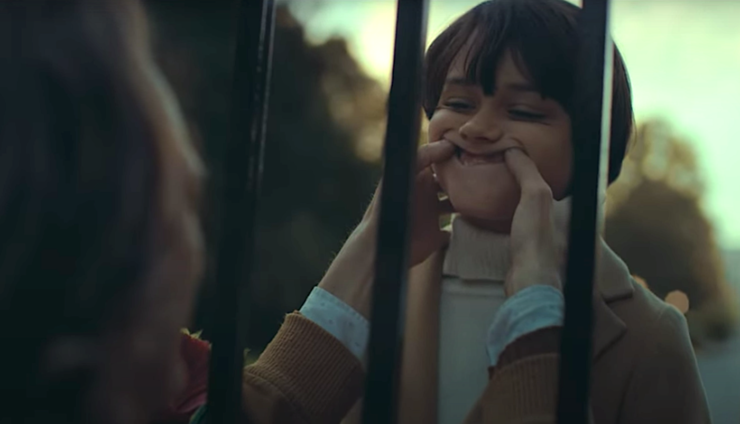
Catalytic Trauma? Crime Alley, pearls, we all know the drill when it comes to Batman.
Moment of Truth? N/A
Even Rocky had a montage: N/A
What’s your name, kid? N/A
Quotes? Ummm, N/A? Bruce and Arthur talk a little bit at the Gates of Stately Wayne Manor, but I don’t think Bruce says anything that counts for this.
I’m putting this at the bottom because, come on, after the vacillation of whether or not Arthur is Thomas Wayne’s son, and then that weird, tense scene between Arthur and Bruce at the gates of Stately Wayne Manor? And just generally how much this movie positioned itself as a BOLD NEW TAKE on, like, everything, man? To just shoehorn the Crime Alley Murder Scene into that last few minutes felt really lazy to me. We’ve all seen this moment so many times—if you’re going to reinvent, go all out and reinvent.
32. The Incredible Hulk (2008)
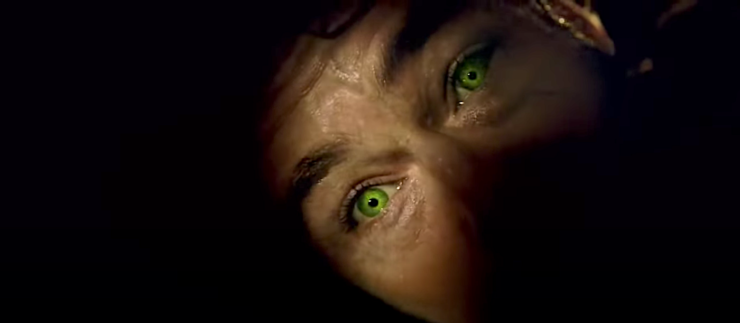
Catalytic Trauma? Something something Gamma Radiation
Moment of Truth? NA
Even Rocky had a montage: NA
What’s your name, kid? NA
Quotes? “Don’t make me… hungry. You wouldn’t like me when I’m… hungry.”
2008’s The Incredible Hulk (the Ed Norton one) is at the bottom because it’s not really an origin story, but instead of dropping us into Hulk’s life, already in progress, and trusting us to figure it out, it packs Bruce Banner’s iconic origin into the opening montage of film, which felt like such a weird half-measure that I’m putting it here.
31. Wonder Woman (2017)
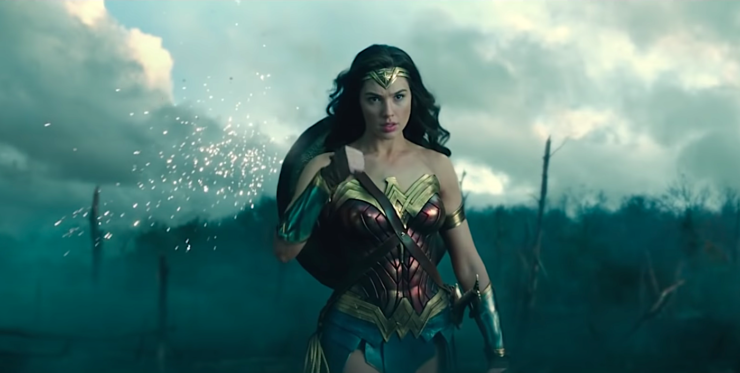
Catalytic Trauma? The Great War comes to Themyscira; Antiope dies in battle.
Moment of Truth? Diana decides to defy her mother’s wishes and leave with Steve Trevor; Diana walks out into No Man’s Land alone.
Even Rocky had a montage: The first 20 minutes of the film shows us the Amazon’s training regimen as Diana grows up.
What’s your name, kid? “Wonder Woman” isn’t used, but Steve Trevor names Diana “Diana Prince” when she attempts to introduce herself as “Diana, Princess of Themyscira” to a bunch of congealed old generals.
Quotes? “You’re wrong about [humanity]. They’re everything you say—but so much more.”
Diana is born superpowered and raised on Themyscira among a bunch of superpowered women. We see her growing up there and being trained as a fighter. When she comes to the, I don’t know, regular part of Earth, on one hand, all she’s doing is using her natural abilities to help people who aren’t Themysciran. She also doesn’t change or grow even a little bit, because she doesn’t need to: she starts out awesome, kind, brave, and highly intelligent, and she’s still all those things at the end, just a little bit sadder.
The thing the film does beautifully, though, is show us Diana making the choice to help humanity despite strong opposition from her family. She chooses to hear Steve Trevor out and treat him with compassion, which leads to her learning about the war raging outside her hidden homeland. And, of course, she chooses to keep fighting for humanity rather than joining Ares to rule over it, despite humanity’s clear shortcomings. So while there’s not much of a traditional origin story arc here, I still wanted to include it.
30. Blade (1998)
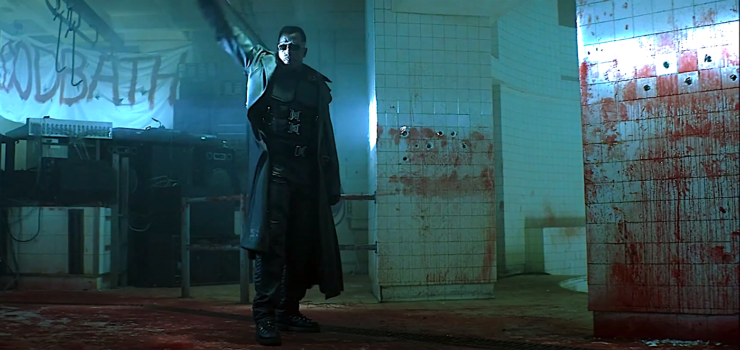
Catalytic Trauma? Learning the truth about his mom’s tragic fate; being a Daywalker trapped for ever between two worlds yet truly at home in neither, in general.
Moment of Truth: N/A
Even Rocky had a montage: N/A
What’s your name, kid? He’s so fucking cool his name is just Blade.
Quotes: “Some motherfuckers are always trying to ice-skate uphill.”
We see Blade’s origin in the opening moments, when his mother is attacked by a vampire while she’s pregnant with him. He’s saved, but is now a Dhampir, and his mother dies. However, when we cut to Wesley Snipes as Adult Blade, he’s already a seasoned vampire hunter and has a father-figure/assistant named Whistler. The film picks the story up as he goes to war against a group of vampire elders who are trying to raise the blood god La Magra. While this is cool as shit, it’s not so much an “origin story” as an in media res story—but it does touch on Blade’s mother’s tragic fate a few times, which is why I wanted to include it on this list. If you go into Blade with no idea who he is, you’ll get a sense of his literal origin.
Plus, tl;dr: Go watch Blade. The success of his movie is the reason you have your precious MCU and fifteen different goddamn cinematic X-Men timelines. And hopefully, someday, when things are back to the state that passes for normal, we’ll get to see Mahershala Ali take up the mantle.
29. Darkman (1990)
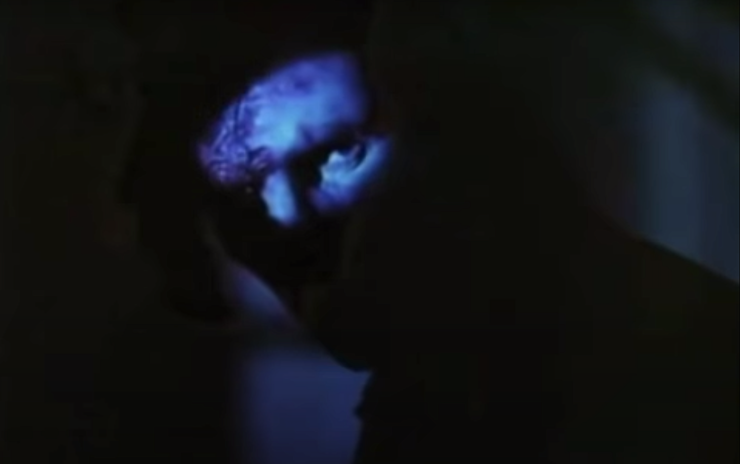
Catalytic Trauma? Scientist Peyton Westlake is attacked, burned with acid, blown up, experimented on while he’s unconscious… actually, this whole movie is him being traumatized.
Moment of Truth: He doesn’t really have a defining moment, he works to get his faces as stable as possible, and then starts using them to exact vengeance.
Even Rocky had a montage: We get several experiment montages, but never the sense that he’s testing himself or gaining new skills
What’s your name, kid? He names himself in a final voiceover, having disguised himself as Bruce Campbell: “I’m everyone, and no one. Everywhere…nowhere. Call me…Darkman.”
Quotes: “Take the fucking elephant!”
Darkman was Sam Raimi’s first try at a superhero movie. He tried to get the rights to The Shadow and Batman, but when that didn’t work out he wrote his own superhero, making him more an homage to Universal Horror characters than a typical costumed hero. Peyton Westlake is a scientist, working on a highly experimental form of synthetic skin. He finally develops a form of the skin that lasts for exactly 90 minutes before disintegrating, just in time for a gang to break into his lab, burn him with acid, and blow him up. He survives long enough to be subjected to a different (and utterly non-consensual) experimental treatment that kills most of the nerves in his skin, but also makes him extremely strong and mentally unstable. Although to be fair, being burned with acid and blown up probably doesn’t help his mental state.
The only sense we get of Peyton’s character is that he’s a dedicated, nigh-obsessive scientist, who’s also happy to suggest blowing off work to stay in bed with his girlfriend. After he gains his powers, he fixates on getting revenge on the man who blew him up, which slowly turns into saving his girlfriend from Louis Strack, the boss of the guy who blew him up. I remembered liking this when I was a kid but I have to admit that while it’s super stylish, it doesn’t work too well as an origin. (There’s also a lengthy helicopter chase [???] that does not work on any level.) Since we don’t know Peyton too well before the attack, we can’t get a handle on how he’s changed aside from “he really wants to kill the guys who blew him up, and now he really wants to kill the guy who’s attempting to murder his girlfriend.” So, solid motives, but “vengeance” really isn’t enough to hang a film on. We never get the sense that he’s using his strength for the greater good—and obviously the evil developer Strack is horrifically murderous and corrupt as a person, but there’s only a tiny tiny hint that his plan for the riverfront is hurting the people of Unnamed City, and we never see anything to disprove that he’s providing a lot of jobs? This is also a case where the movie’s divorce from reality hurts it a bit. We know that Peyton’s false faces will only last 90 minutes, which is a perfect source of tension, but beyond that we never really know how strong he is, or if he has any other powers. When he fights, his main move seems to be jumping on people from above, but it’s not like he’s Spider-Man, with powers that allow him to scale walls, he just somehow manages to climb up to catwalks and mezzanines with no indication of how he does that without anyone seeing him. Hiding in shadows is not, itself, a viable superpower.
28. Green Lantern (2011)
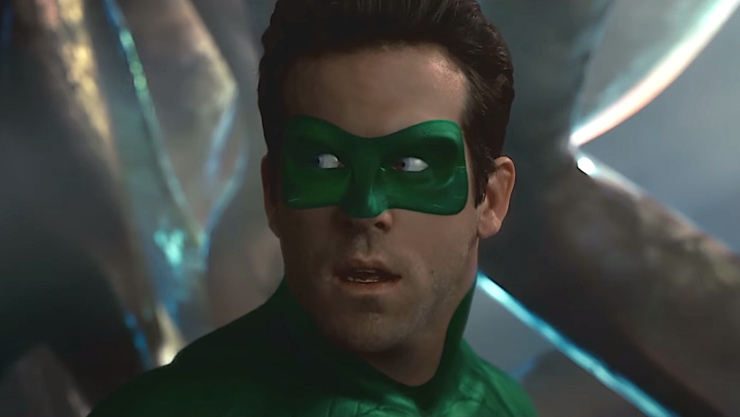
Catalytic Trauma? Young Hal Jordan watches his dad explode.
Moment of Truth: Hal finally communes with the Lantern and it recites the Oath through him; he decides to stop running away and defend Earth.
Even Rocky had a montage: We get a few far-too-brief moments of Hal ecstatically flying, and then a weirdly aggro training montage on Oa that’s so mean-spirited it doesn’t accomplish what this montage should do, namely show us a hero coming into their own.
What’s your name, kid? The Green Lantern Corps. was named eons ago, and Hal is just taking up the mantle.
Quotes: “I know that humans aren’t as strong as other species, or the smartest. We’re young, we have a lot to learn. But we’re worth saving.”; “I, Hal Jordan, do solemnly swear to pledge allegiance… to a lantern, that I got from a dying purple alien in a swamp.”
Let the record show that I love Ryan Reynolds. I’m a huge fan of his gin, he was fantastic in Buried, and one of my greatest wishes in life is that I could have been the one who leaked the Deadpool footage. But Green Lantern refuses to work. Every time it starts to work, it’s like a studio exec noticed and yanked the leash to make it behave. We get multiple moments where “the love interest” is actually a competent pilot and business manager who calls our callow hero on his shit—but then she has to go back to being doe-eyed and damsel-y. We get a potentially twisted father figure arc, where the nerdy character turns to villainy to take revenge on the father who always treated him like crap—but instead our comic book movie gives us a science professor who becomes a villain because being a nerd made him sad. Also, he’s in a wheelchair? And hates Ryan Reynolds’ character for being handsome? Read the room, movie.
I watched the Extended Edition, which I think specifically beefed up the origin story aspect. Our hero Hal Jordan is the son of a test pilot. Elder Jordan tells his son that part of a test pilot’s job is “not to be afraid”, so we know the poor bastard’s doomed. But the movie chooses to gun the engine and shoot straight down the tarmac into a scene of young Hal Jordan watching his dad die in a fiery explosion. Then we cut to Present Day where Hal Jordan is dashing out of a rumpled bed and away from his latest one-night stand because he’s late for his job—as a test pilot. And yes he has flashbacks to his dad’s fiery demise during the test, why do you ask?
Also Taika Waititi is in this movie? Though he and Reynolds both refuse to admit it.
We’re all set up for when the Ring chooses Hal, for him to transform his life and become a better person and be mentored by Sinestro. But no! Hal mostly stays the same, Sinestro tells him not worthy to be in the Lantern Corps., Hal agrees, and goes back to Earth but keeps the ring and all the superpowers??? He obviously loves flying when he’s not backflashing to his dad’s fiery death, but the movie spends almost no energy on the fact that he can fucking fly now, sans plane. When he has to defend some partygoers from a maverick helicopter he does this by creating an enormous, green, Hot Wheels track, instead of just throwing a net over the helicopter blades or something. Finally, he spends so much time fighting his old childhood friend (who, again, is now a deformed, wheelchair-using villain [?!?!? WTF, MOVIE]) that he barely has time to fight Parallax, the actual supervillain, and when he does fight him he just keeps using the Ring to make big green machine guns and fists and shit instead of literally anything in the universe since the whole point of Green Lantern’s powers is that you can create anything you can imagine which is cool as SHIT and why he’s kind of the best hero (other than Nightcrawler) and you have that CGI budget why don’t you use it to make some cool shit??? Did Lockheed Martin produce this movie? Was it funded by Grumman? There are more things in Heaven and Earth than guns and fucking fists.
27. Meteor Man (1993)
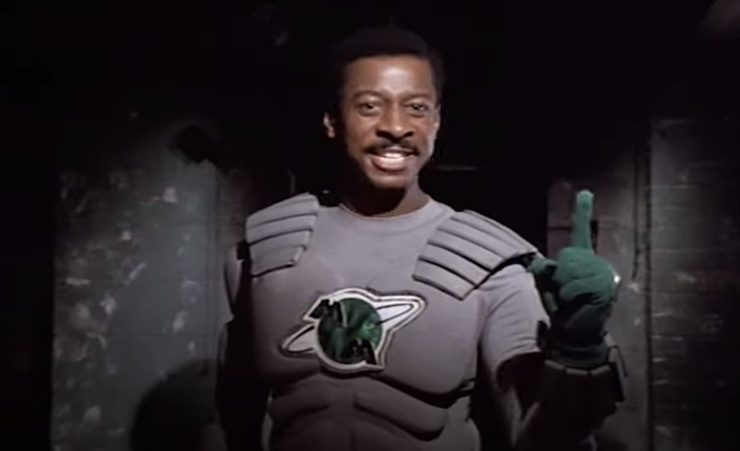
Catalytic Trauma? After intervening in a mugging, Jefferson Reed is hit by a glowing green meteor, which merges with his DNA, and it looks agonizing as HECK!
Moment of Truth: Jefferson intervenes in the aforementioned mugging; he faces the Golden Lords gang despite having lost his powers.
Even Rocky had a montage: We see Meteor Man cleaning up the neighborhood and brokering peace between the Crips, Bloods, and police while his mom upgrades his supersuit.
What’s your name, kid? The community names him Meteor Man.
Quotes: (per MM’s nemesis, Simon Caine): “THIS IS WHAT I THINK OF YOUR METEOR MAN!” (throws Meteor Man through a bookmobile)
Once again we are faced with a movie that I wanted to like, made by people I was rooting for, that just does not come together. Robert Townsend made Meteor Man in 1993, long before any comic book movie boom, from an original idea that was spun into a limited comics series from Marvel. The basic idea—cowardly substitute teacher from a rough neighborhood uses superpowers to clean up the community—is great. Unlike most of the heroes on this list, hero Jefferson Reed never has a secret identity—people know he’s Meteor Man the entire time, and the community initially rallies around him. His mom sews his supersuit, and his neighbors critique his performance. The idea of an open hero is fascinating, especially given that the community turns on him pretty viciously when his work attracts the attention of a brutal gang.
Unfortunately, the movie’s execution of the idea is clumsy. Jefferson himself isn’t really defined much beyond being afraid of confrontation, so his heroic arc never snaps into focus. On top of that, the meteoric powers themselves are simply too, well, big: Jefferson has flight, x-ray and laser vision, plus superstrength, plus healing powers, AND he’s able to absorb all the contents of any book just by touching it, AND he can communicate telepathically with dogs. The only caveat is that he can exhaust himself easily (but he can “recharge” by sleeping), and the “absorbing a book’s contents” power only lasts for 30 seconds. Having so many powers and so few consequences drains a lot of the tension from the film. There are a few sequences that show the films potential—in one Jeff selflessly fends off a hail of gunfire to protect his family, only to look down at two handfuls of bullets and realize that his hands are bleeding. Not only is this a great visual but neither he nor the audience knows when or if his powers are coming back, and it’s kind of intense. In another scene, Jeff’s gone into one of his nigh-comatose recharge naps, and his dog Ellington (the true hero of the film imho) has to bury him in dirty laundry when the gang breaks into his apartment. Here again, we see a real consequence to living as a hero. Jeff’s just a man who lives in a normal studio and lets his laundry pile up in the hamper. He’s vulnerable, and thus potentially relatable, in a way that a Batman or a Superman can’t be. But rather than focusing on Jeff’s arc the movie relies too much on cartoonish gang violence and simplistic morality to become as involving as it might have been. One completely excellent aspect of the film, though? This was Black Panther costume designer Ruth E. Carter’s first superheroic outing.
26. The Amazing Spider-Man (2012)
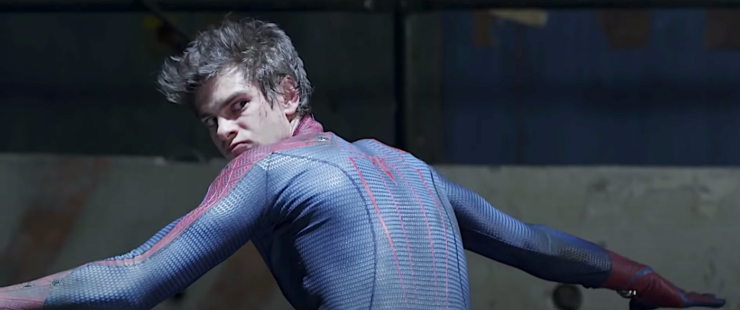
Catalytic Trauma? Peter Parker’s parents’ death; THE TRAGIC DEATH OF UNCLE BEN
Moment of Truth: Peter rescues a kid on the Williamsburg Bridge, and finally stops pursuing vengeance and starts acting like a hero.
Even Rocky had a montage: The first spiderpower-testing-montage comes as Peter is skating, and gradually notices how strong he is. Unfortunately, the rest of the montages are all framed as Peter hunting Ben’s murderer, so any sense of Peter’s growing powers and skills are balanced by the very real fear that he’s going to do something drastic.
What’s your name, kid? He names himself, seemingly out of nowhere, during the rescue on the bridge.
Quotes: “No one seems to grasp the concept of the mask.”
Once again, I need to be clear about a few things. I liked Marc Webb’s debut film, 500 Days of Summer, enormously. Andrew Garfield is one of my favorite actors. (Has there been a modern run of performances to match his in Silence, Hacksaw Ridge, Angels in America, Breathe, and Tick, Tick…Boom!?) I love Emma Stone as Gwen Stacy and I think her chemistry with Garfield is remarkable, Martin Sheen and Sally Field are fantastic as Uncle Ben and Aunt May, respectively, and Rhys Ifans is good as Dr. Connors. It’s cool that Peter and Flash Thompson have an actual relationship arc. Making Peter an engineering nerd who can immediately diagnose the problem with May’s chest freezer and rig up a bolt for his bedroom door is a nice way to show us his intelligence. The rescue on the Williamsburg Bridge? Good. New York City’s crane operators working together to help Spider-Man save the city? VERY good.
However. This movie, as a Spider-Man movie, just doesn’t work. The film sets up a few innovations that could be great: a bodega robbery leads to Uncle Ben’s murder; Peter clashes with Captain Stacy rather than J. Jonah Jameson over Spider-Man’s motives; Peter’s kind of a dirtbag who uses his spiderpowers to enhance his skating; Peter is a believably traumatized, orphaned teen. But in each case the movie goes way over the top. As many, many people have stated before me, this take on Peter Parker strays too far from the spirit of the character. He’s way too cool—and almost a bully himself at a few points in the film. The fact that his father was a scientist who was murdered for his top-secret research undercuts the working-class underdog aspect that makes Peter so special among superheroes. He doesn’t start using his powers for good because with them must come great responsibility—he starts off by using his powers to hunt Uncle Ben’s murderer down like he’s a teenage Punisher. He doesn’t start acting like a hero until an hour and fifteen minutes into the movie, and even then he only saves a few people before he’s so busy trying to stop Dr. Connors that we never get to see him be a friendly neighborhood Spider-Man. We don’t come to Spider-Man for vengeance, we come to him to see the best New Yorker ever, and this movie falls short of that.
25. Hulk (2003)
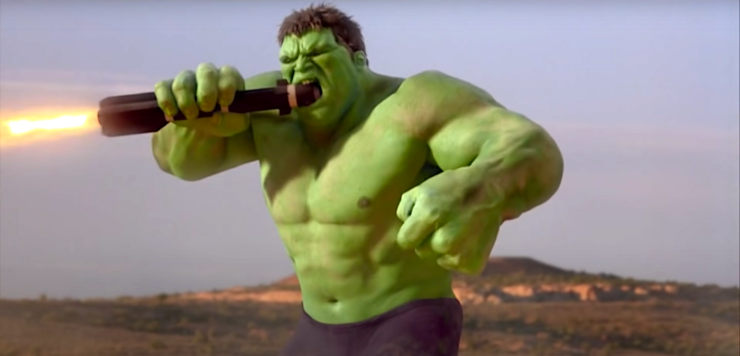
Catalytic Trauma? Good god, where to begin? Scientist David Banner torments his infant son to trigger Hulk responses, then tries to murder him for being dangerous; Bruce’s mother’s intervention means that baby Bruce lives, but he watches his father stab his mother to death—or, excuse me, as David Banner himself puts it, Bruce sees when “she..and the knife…merged”; Adult Bruce is repeatedly prodded and triggered by both General Ross and his father.
Moment of Truth: Bruce/Hulk’s true nature is revealed when he goes to protect Betty Ross from David Banner’s evil mutant dogs. (Did I mention you get to watch the Hulk kill evil mutant dogs in this movie?)
Even Rocky had a montage: Any time DNA appears in this film, you can bet your life someone’s about to sequence the shit out of it. We also get a few fun scenes of Hulk leaping across the desert before General Ross tries to nuke him. God! THIS MOVIE!
What’s your name, kid? I don’t think anyone quite calls the Hulk the Hulk?
Quotes: “Puny human!”
UGH THIS FUCKING MOVIE.
I’m a huge fan of Ang Lee, and I remember going into this movie years ago wanting to like it, and being impressed with some of the stylistic choices. When I rewatched I thought it would probably rank pretty high on this list, since it delves into how Bruce Banner becomes Hulk as a result of his father’s experiments, and becomes a deeply-nested origin story. I will say that between Eric Bana and a young Daniel Dae Kim, this film has the best cheekbones on this list. But! Cheekbones aren’t everything, and I found rewatching Hulk to be a very frustrating exercise. It it so overburdened with daddy issues, and so divorced from reality, that it feels like an extended family therapy session rather than the opening salvo of an iconic hero.
David Banner runs through a series of tests on cell regeneration, in what appears to be a concerted effort to transform humans into every Spider-Man villain simultaneously. (Except Vulture—I didn’t see any vultures.). Obviously he tests his volatile serums on himself with no oversight.
This does not go well.
What goes even worse is that his wife gets pregnant and he discovers that their child has anomalous DNA. When the military cuts his funding he responds in the only rational way: blowing up the lab up and attempting to murder his child. We cut to Bruce Banner, now Bruce Krenzler, heading off to college, then we cut again to him as a scientist, working with his ex Betty Ross on an experiment that is almost exactly the same as his dad’s. He has no idea about this. He exposes himself to severe Gamma Radiation to save a fellow lab worker (who, having served his purpose, is never spoken of again) and he starts blacking out and becoming the Hulk. The Hulk is a giant green rage monster, but he seems to recognize Betty, and only Betty. The rest of the movie veers between Bruce’s crazy-ass dad (played with full crazy-ass-ness by Nick Nolte) trying to force Bruce to be the Hulk full time, and Betty’s equally shitty dad (played with full Old West gruffness by Sam Elliot) trying to imprison or explode the Hulk. The whole psychodrama culminates in General Ross shackling Bruce to a chair so he has to sit still and listen to his father berate him, and inform him that the Hulk is his true son. (I’m not sure what this is supposed to achieve?) The Hulk smashes, Banner père transforms into a fellow monster and leeches a bunch of power from him, both of them seemingly explode, General Ross bugs Betty’s phone in case Bruce is still alive. It’s all very gross. Only in the last scene do we learn that Bruce has fled to Central America, where he is working as a traveling medic, and he finally tells a soldier “You wouldn’t like me when I’m angry.” This movie is far more a psychological drama that’s using the story of the Hulk as a platform rather than a true superhero film—which could have been great if it was a bit shorter, and if it focused a bit more on Bruce and Betty rather than their uniquely awful dads.
24. Green Hornet (2011)
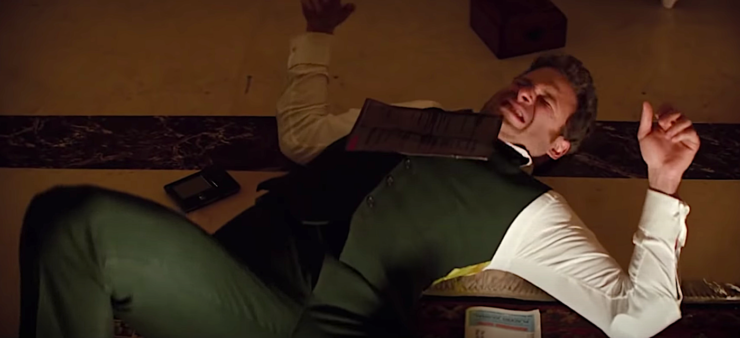
Catalytic Trauma? Britt Reid’s mother’s offscreen death; Britt being systematically emotionally abused by his jerk dad.
Moment of Truth: When Britt witnesses a mugging, he decides to intervene despite being titanically incompetent as a fighter. Luckily, Kato helps.
Even Rocky had a montage: As Britt never trains, and Kato seemingly doesn’t need to, the montages here are all Kato working on cars and weapons.
What’s your name, kid? Britt tries to make his newspaper name him “The Green Bee” (in a weird homage to the thing he thinks killed his dad? But then it turns out that’s not what happened?) but Kato changes it to the marginally better “Green Hornet”, and the editors run with it.
Quotes: “I have two questions for you Kato, and then you can go home. Why is it that my dad’s mechanic makes the coffee, and why is it that without you, the coffee tastes like crap?”
Full disclosure: I honestly forgot this movie existed until I started research for this post. You there, out in Readerland—do you like this film? Is there a fanbase? I’d love to hear from people who liked this one in the comments, because I feel like no one talks about it at all.
As far as origin stories go, this one starts off pretty strong. We open on Britt Reid, who looks to be about 8, being chauffeured to his dad’s office. He’s clutching an action figure of a masked hero. His dad, a mega-rich newspaper mogul, berates him for getting sent home from school, and yells at him that of course they miss Britt’s mother, but they both have to move on with their lives. (Normal thing to scream at a child.) Britt protests that he only got in trouble for defending another kid from a bully. The dad scoffs at him, grabs the action figure, and rips its head off. Then he chucks the head into a trashcan, and shoves the decapitated body back at a weeping Britt.
Couple things.
We immediately see that Britt and his dad are cartoon rich. We see why. We see that Britt loves superheroes, that his mom is dead, that he has a fraught relationship with his emotionally abusive dad, and that his instinct is to do the right thing despite fear of punishment.
Honestly this might be the most elegant opening scene on this entire list. This thing is a fucking mathematical proof for a superhero. Unfortunately it’s all downhill from here. There are some fantastic touches. Since Britt inherits his dad’s paper he can print articles on “The Green Hornet” until he makes himself famous. Jay Chou is great as Kato, and the movie has fun with the fact that Britt knows he’s the lesser hero of the two. There’s a long sequence about the importance of a good cappuccino which almost justifies the whole movie for me. But the movie itself is such a bumpy ride. We get Christoph Waltz as an underworld figure named Chudnofsky, who is sometimes campy, sometimes scary—but never enough of either—who only transforms into a real “villain” at the end of the film. Britt himself barely changes. He and Kato both spend almost all of their shared screentime with Cameron Diaz sexually harassing her, and it’s gross. The tech montages of Kato building cars and weapons are fantastic, and there’s a beautiful split-screen sequence when Chudnofsky sends a bunch of henchpeople out after the Hornet, but each time the movie builds up some steam it bogs down again a few minutes later. There’s also the fact that apparently Kato is a legit superhero who can move almost faster than light, which is never explained—but sometimes, maybe, Britt has this superpower, too? But since there’s no arc to those abilities they just seem like plot conveniences, and we never learn why or how either of them are capable of becoming heroes, which makes the whole film fall flat.
23. The Fantastic Four (20o5)
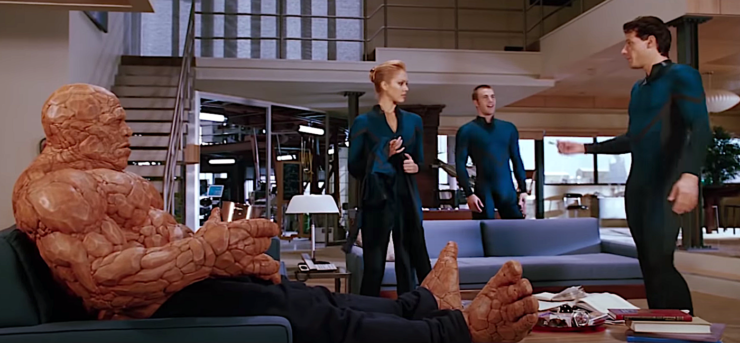
Catalytic trauma? Ex-lovers/scientists Reed Richards and Sue Storm, Sue’s brother Johnny, and astronaut Ben Grimm are working on scientist/entrepreneur Viktor von Doom’s space station when a “space storm” irradiates all of them.
Moment of Truth: The Four work together to save people from an accident on the Brooklyn Bridge. Fellow New Yorkers begin cheering for Ben Grimm, and shout the cops down when they try to arrest him for being made of rocks.
Even Rocky had a montage: Most of the montages are dedicated to Reed and Sue researching ‘cures’ for their powers.
What’s your name, kid? The press names them the Fantastic Four after the Brooklyn Bridge Incident, and Johnny runs with it, declaring himself the leader of the group, and dubbing Ben Grimm “The Thing”. This does not go over well.
Quotes: Ben Grimm, to some random children: “Don’t do drugs!”
While watching Fantastic Four I had to keep reminding myself that this movie came out after Spider-Man and X-Men—it’s so cheesy and glossy that it feels like it came from a different era of superheroic moviemaking, and obviously looking back at it from the post-Nolan, post-MCU, post-other–Fantastic Four world it feels even more like an anomaly. I don’t know, like the kind of once-in-a-lifetime event that could irradiate five space travelers and give them mutant powers or something.
The way this movie shows us Johnny Storm’s new powers is that he breaks quarantine to go snowboarding with his nurse, who looks like she walked onto set directly from a Blink-182 album cover photo shoot. Since Johnny keeps accidentally FLAMING ON he melts the snow as he boards, crashes into a snowbank, and makes his own hot spring! The nurse finds him nude in a steaming pool. He then invites her to join him—and it’s heavily implied that she does so. (There’s also a running gag of Sue getting naked so she can be invisible and escape people? It’s, um, grating.) The film does a good job of showing each character’s trajectory: Reed and Sue want to test their abilities, and possibly cure them, but their drama is woven into their feelings for each other; Johnny wants to show off and use his powers to become famous; Ben Grimm loses his wife, wallows in self-pity, and just wants a cure; Viktor Von Doom wants power over all the FOOLS he lives among. (Fair enough.) The issue I have is that when we see the Four come together as a team, it’s only to fix a problem that Ben inadvertently caused—his attempt to help a potential suicide on the Brooklyn Bridge results in a massive pile-up, and each team member has to use their powers to save people. But instead of learning about their powers and being heroes, the Four then spend most of the movie trying to get rid of their powers and fighting with each other—a nice realistic touch in a series of comics, but annoying as the main plot of a single film. We finally see them live up to some of their promise when Doom tries to destroy them, as Sue uses her invisibility to rescue Reed, Johnny finally uses his powers as part of the team rather than just to show off, and a cured Ben has to make the decision to re-irradiate himself so he can be strong enough to save his friends. But they only spend about 15 minutes of the total runtime being the Fantastic Four.
22. Fantastic Four (2015)
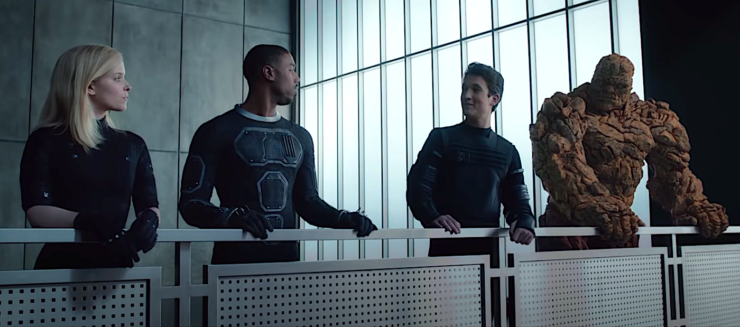
Catalytic Trauma? Reed and Ben both have crappy childhoods; the trip to Planet Zero, um, does not go as planned?; Reed, Ben, and Johnny watch in horror as Planet Zero eats Viktor Von Doom.
Moment of Truth: Reed runs away to research a cure for his friends rather than working for the military, but the film hints that this is a moral failing? Later, the four of them stand up for themselves as a team and refuse to work with the military anymore.
Even Rocky had a montage: We cut from the terrified kids not knowing how to control their powers to months later, when Reed has developed a super suit, and the others have trained in military labs.
What’s your name, kid? In the final moments of the movie Reed goads them into coming up with a team name.
Quotes: Johnny Storm initially suggests “How about two guys, a girl, and the thing that nobody wanted?” as a name for the group.
For the first forty minutes or so, the 2015 Fantastic Four is a fascinating—if flawed—origin story. We’re introduced to Reed Richards and Ben Grimm as misunderstood kids (maybe even abused, in Ben’s case) and the good thing here is that Reed is simply a smart kid. He seems to be the only child in a lower-middle-class family, he’s not a mutant or a chosen one or anything, he’s just intelligent and willing to ignore the jeering classmates and obtuse teachers. He’s a great portrait of a smart kid in the circumstances a lot of smart kids end up in—not tortured or abused, just ignored. He doesn’t have a nemesis to test himself against, or the “I’ll show you all, someday!” tone that a lot of movies about geniuses give us. His ideas are dismissed by people who don’t understand them, and since he’s a kid, he can’t do anything about it. Ben Grimm seems to be a rung lower on the class ladder—he lives in a home where his brother slaps the shit out of him for no reason (whilst yelling “It’s clobberin’ time!” I might add) and then that brother gets the shit slapped out of him by their mother (we don’t meet dad, but I think I get the picture). It’s refreshing that Ben, rather than being a bully himself, is nice and thoughtful, and the audience is expected to realize that he must be tremendously strong to stay nice and thoughtful in a home like that.
When Reed is whisked away to Baxter Foundation we get to see that initial excitement of being around people he can really talk to. But this is also where the movie falters, because it doesn’t give us enough of that. It also doesn’t dig into how it feels for Ben to be left behind; we never get a sense of young Sue Storm beyond the fact that she “likes patterns”; Johnny Storm is a drift racer who reluctantly works for the Baxter Foundation so he can pay for repairs on his car, which I love; young Viktor Von Doom is the stereotypical tortured genius who hates rules and tries to stay outside the rigid structures of government and military. Since the movie doesn’t do enough with this foundation, though, we never get a sense of the kids as a team, which means that there’s no heft to the emotions when Reed and Ben fight later on, or when the Four have to face off with Doom.
Rather than being mutated in space, the four boys travel to Planet Zero in teleporters. Reed takes the time to invite Ben, which is sweet, but then no one invites Sue even though she’s been working on the Planet Zero project longer than anyone aside from Viktor. Once they arrive, Viktor basically pokes the planet until it gets pissed off and eats him. Sue gets hit with a blast of radiation when she teleports them all back to save them, and the ensuing explosion causes Reed, Ben, and Johnny to fuse with elements from Planet Zero, Brundlefly-style. The problem is that what should be the Catalytic Trauma is so delayed, and the powers the kids end up with so random, that it feels like this was a kitchen sink YA drama that had superpowers shoved into at the last minute, and that characters don’t grow or change as a result of their powers. Reed is smart and nice as a child, then as a teen, and then as a mutated superhero. Johnny Storm likes to go FAST, and later he likes to go FAST while on fire. Sue worries about the boys and can see patterns, and later she’s even more worried. Ben Grimm is nice, thoughtful, and severely mistreated by his family, and later he’s severely mistreated by the government, and seems extremely gruff and angry, but we don’t know if he’s mad because of the accident, or if, after years of being slapped around, he enjoys being able to throw a tank like a baseball.
I’m still ranking this one higher than the other Fantastic Four, though, for one simple reason: no one orders Sue Storm to strip in front of her brother.
21. Man of Steel (2013)
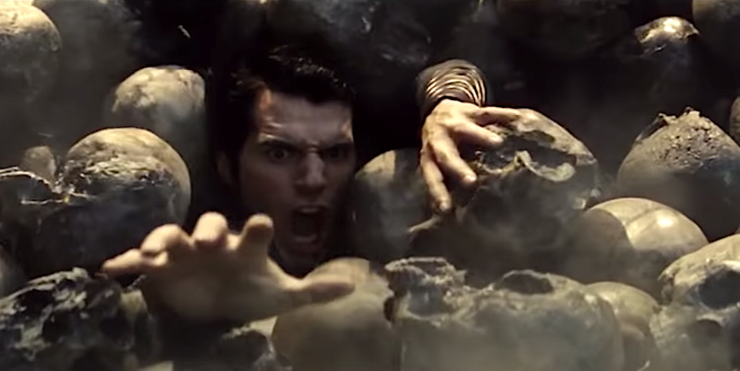
Catalytic Trauma? Kal’s planet is destroyed; he grows up a bullied alien; when he finally meets his bio-dad he’s a semi-sentient hologram; and when he finally meets the last members of his race they immediately try to murder him and his human mom.
Moment of Truth: Young Clark puts his classmates’ lives ahead of his own needs during a school bus crash (much to Pa Kent’s chagrin); Adult Kal turns himself in to the U.S. government in an attempt to to appease Zod.
Even Rocky had a montage: We get an all-too-brief sequence of Kal learning to fly in the Arctic and zipping around the world before Zack Snyder drags us back to Gloomtown.
What’s your name, kid? Lois calls Clark “Superman” after he turns himself in to the military, but an intercom in the interrogation room crackles and obscures the name.
Quotes: “You’re not my dad! You’re just some guy who found me in a field!”
Oooof, this movie. Look. I like what it’s trying to do. I have some issues with Richard Donner’s classic take on Superman, and I always find myself drawn to the flame of deconstruction.
BUT.
This movie spends the first 20 minutes on Russell Crowe and Michael Shannon fighting, jams a whole bunch of worldbuilding about Krypton’s collapsing empire and rejection of natural childbirth, rather than focusing on little Kal being sent off in his pod, we focus on Jor-El being stabbed to death, while Lara El throws herself on her husband’s corpse and screams in anguish. This sets a certain tone?
We rejoin Clark as an adult on a fishing boat, and the film cuts back and forth between his current life, working his way north to learn the truth about his alien parentage, and various traumatic incidents from his past as he navigates childhood on Earth with his adoptive parents MAAARRRTHAAAA and Jonathan “fuck them kids” Kent. The first half of the film is very much an origin story, as it draws direct lines between everything adult Clark encounters on his journey and memories from his past, including his dad’s death, which he feels lots of guilt about even though it was really blatantly suicide-by-tornado. Clark’s reunion with his holo-dad is interrupted by Lois Lane’s investigations, which lead to her being attacked by alien tech, which in turn lead to a scene where Clark cauterizes her wounds with his heat vision while she screams in agony.
Again, Snyder made some choices.
The second half of the film is about Clark wrestling with how to respond to Zod, then physically wrestling Zod, while various humans try to stop Zod’s henchpeople. We never really see Superman save anyone other than Martha and Lois—even the family who are trapped by Zod in the end of the film just sort of vanish as soon as Kal snaps Zod’s neck. While Snyder’s attempt at creating a realistic story of an alien living on Earth, and the Earth’s response to him, is noble, and has some stunning imagery, it also focuses so much on the problems and pain of being an alien that Clark’s loving nature barely comes through. Plus the film is so busy wallowing in 9/11 porn that the human stakes never feel real.
20. Captain Marvel (2019)
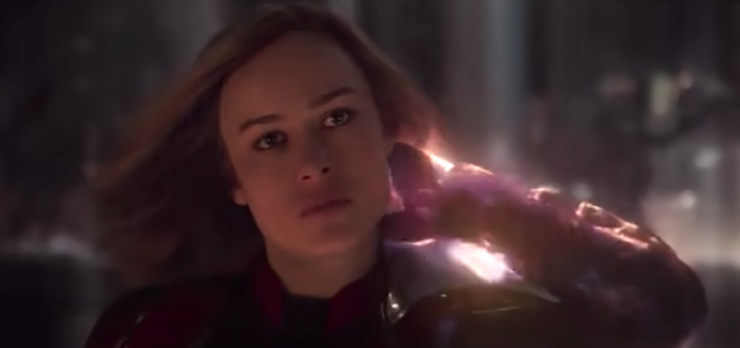
Catalytic Trauma? As a human, Carol Danvers is treated like crap by her family; sexually harassed/possibly assaulted in the Army; attempts and fails to save Mar-Vell/Dr. Lawson. As Vers she learns that she’s been brainwashed by trusted mentor Yon-Rogg.
Moment of Truth: Listening to Talos; declining to fight with one arm metaphorically tied behind her back.
Even Rocky had a montage: We get flashbacks to her military training, plus training sessions with Yon-Rogg that are rigged against her.
What’s your name, kid? Carol is Captain Marvel in honor of Mar-Vell, her true mentor. Another significant naming happens when Nick Fury names his new superhero initiative in honor of Carol’s callsign, “Avenger”.
Quotes: “I have nothing to prove to you.”
Rather than being a “human gets a special ability and learns how to use it” story or even an “alien comes to Earth, where their powers are extraordinary” story, Captain Marvel is a “hero recovers their memories of their origin story” story.
When we meet “Vers” she’s a member of the Kree Starforce, competent but not considered especially gifted as a fighter or tactician, and often nagged by her boss Yon-Rogg to be more disciplined. However, when Vers is stranded on Earth, she discovers that she’s actually Carol Danvers, a human member of the U.S. Air Force who was mentored by Dr. Wendy Lawson—and she’s super powerful on Earth. Then Carol learns that Dr. Lawson was actually a Kree scientist named Mar-Vell, who was murdered by Yon-Rogg, who then took Danvers back home with him after she was infused with the powers of the Tesseract. So, she is a superhero, even by Kree standards, but she’s even more of a superhero by Terran standards. If that makes sense?
But as with a few of the other films at this end of the list, Danvers is already an adult, with a past and a moral code, before she gains the powers of the Tesseract. I would argue that her heroism lies in her attempt to save Dr. Lawson/Mar-Vell—which is why she ends up infused with the Tesseract’s powers—and then in her later decision to side with the oppressed Skrulls despite years of Kree brainwashing. But the film’s structure still makes for more of a complicated riff on the idea of an origin story.
Also the film’s true hero is obviously Goose, whose origin we never see.
19. Rocketeer (1991)
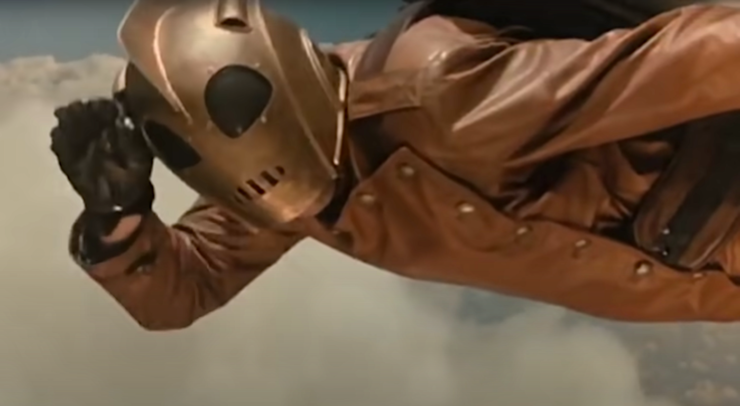
Catalytic trauma? Maybe the collective trauma of WWI?
Moment of Truth: When stunt pilot Cliff Secord is late for the big airshow, his WWI-veteran buddy, who hasn’t flown since the War, borrows his plane to save Cliff’s ass. Obviously he almost crashes, so Cliff throws the rocket pack on and risks his life to save him.
Even Rocky had a montage: We get a fun montage of Cliff and and his mechanic friend, Peevey, testing the rocket with a stolen statue of Charles Lindberg (which, cool, cause fuck Charles Lindberg); Cliff goes on a joyride immediately after rescuing his veteran friend.
What’s your name, kid? Airshow manager Otis Bigelow names Cliff “The Rocketeer” when newspaper reporters ask for the mysterious rocket man’s identity. Cliff sees the name in the paper and goes with it, even though he doesn’t do as much Rocketeering as you’d expect.
Quotes: Jenny, to Cliff: “The Rocke-who?”
The Rocketeer isn’t just a weird movie, it’s a weird moment in cinema history. The movie attempts to capitalize on an odd combination of 1930s nostalgia (and the adventure style re-popularized by Indiana Jones) and superhero/comic book narratives, but for a family-friendly PG-audience—think Batman or Dick Tracy but explicitly for kids. It does a few things very well, but never quite finds its own tone.
The year is 1938, the Nazis are still claiming they’re nice once you get to know them, and to prove that they’ve sent a dirigible on a peacemaking mission across the U.S. Billy Campbell is Cliff Secord, a test pilot who is 68% stubbled jaw. He lives with a mechanic named Peevey, and he’s dating a swell girl named Jenny who was a nude artist’s model in the original comic, but has been transformed into a much more Disney-friendly starlet for the film. When Cliff finds Howard Hughes’ rocket jetpack, he gets tangled up in a battle between the mob, the FBI, and swashbuckling actor Neville Chambers, a secret Hollywood Nazi. This premise sounds amazing, but The Rocketeer stalls out at the middle of the list because Cliff only uses the rocket to save his girlfriend and escape from the mob, and even the final fistfight/shootout/flaregun battle on the previously-mentioned Nazi dirigible is more about getting rescuing Jenny from Neville than defeating Hitler. In the end, Cliff and Jenny haven’t changed a bit (except the big lug is willing to tell her how he feels about her) but since she pilfered Peevey’s rocket pack designs from Neville, perhaps the Rocketeer will fly again?
18. Ant-Man (2015)
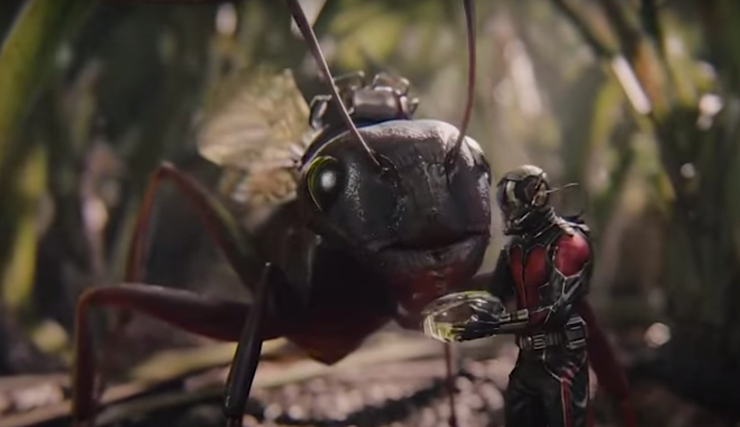
Catalytic Trauma? I think the closest thing we get is Scott Lang realizing that even though he served his time (and even though his crime served the greater good), he can’t get a decent job as an ex-con.
Moment of Truth: Risking arrest to return the suit to Hank Pym’s house.
Even Rocky had a montage: Scott is pummeled by Hope as she attempts to train him, and we see him getting better at commanding the ants.
What’s your name, kid? Hank Pym asks Scott to be “the Ant-Man” and Scott asks if they can change the name; he introduces himself to Falcon as “Scott”; when main villain Yellowjacket tells him he’s “just a thief” he replies with, “No, I’m the Ant-Man!… I know, it wasn’t my idea.”
Quotes: “Look, man, I got a master’s in electrical engineering, all right? I’m gonna be fine.”
Ant-Man works more as a riff on an origin story than as a classic story on its own. Despite Paul Rudd’s agelessness, Scott Lang is seemingly an early-middle-aged dad when he’s put in prison, and when he’s released his daughter is about 7. Not that age matters particularly to a hero, but simply to mention that Lang’s morals and personality are already formed by the time he meets Hank Pym. The only reason he was in prison was because he used his tech knowledge to hurt an evil corporation, and the only reason he decides to go back to a life of crime is that his criminal record makes it impossible for him to earn the money for his child support payments. He’s already a good dude. So what we’re seeing once he gets the suit is a person who is taking the opportunity to be a larger-scale hero, rather than a kid learning how to wield their new powers in a superheroic bildungsroman.
Scott Lang’s heroic Moment of Truth is pretty clear: after he realizes that the Ant-Man suit is experimental tech, he risks his freedom to break back into Hank Pym’s home to return it. This shows Pym that Scott is willing to bend the law, but also that he still has a moral core Pym can rely on. The rest of the film unfurls along the typical beats: Lang is trained to use the suit, to fight, and to command his ant army…OK that one’s not a typical beat. The movie weaves Lang’s first superhero outing into a heist tale. One thread is about fighting corporate greed and keeping tech out of the wrong hands, which allows him to fights the bad guy and foil HYDRA. But in the other thread, he rescues his daughter and earns the respect and trust of his ex and her new husband, who begin to treat him as a co-parent again. This gives the movie a more mature arc than most of the films on this list—it’s really more about becoming a better dad than becoming a great hero, which, the more I thought about it, the higher it went until it landed here.
17. Orgazmo (1997)

Catalytic Trauma? Not exactly? Although Joe Young is a little startled by his first day on a porn set.
Moment of Truth: Joe decides to help Ben Chapleski’s friends when they’re threatened by thugs.
Even Rocky had a montage: The morally-questionable scene of Joe and Ben non-consensually zapping people with the Orgazmorator.
What’s your name, kid? Maxxx Orbison names the character and his porn film “Orgazmo”; Joe later (reluctantly) adopts the name for his alter ego.
Quotes: “Use your hamster style!”; “Jesus and I love you.”
Orgazmo actually tracks pretty closely with Ant-Man? Like Scott Lang, Joe Young is already an adult with a fully-formed personality at the start of the film. By the time we meet him he’s already a skilled enough fighter to defend himself from porn producer Maxxx Orbison’s security, the defining moment that leads to Orbison asking Joe to play “Orgazmo”—a porn star who uses an “Orgazmorator” to fight crime. Joe agrees, but as a devout Mormon missionary he stipulates that a stunt man come in to do the pornier parts of a porn star’s job. He gains a Q/sidekick in Ben Chapleski, who is, also like Scott Lang, an MIT graduate who’s ended up working in corner of society that isn’t considered mainstream. (Where Scott uses his skills for a career of morally pure but illegal heists, Ben has created a unique path in the porn industry as an outlet for his overactive libido.) Ben creates a real working version of the Orgazmorator, and after nefarious underworld goons try to put a friend out of business, the two men head out into the night, as Orgazmo and Choda Boy, respectively, to… fight crime… kind of? And eventually rescue Joe’s fiancee after she’s kidnapped by Orbison.
Here again, this has some strong elements: Orgazmo and Choda Boy have excellent themed costumes, they lead double lives, Ben has a dark past, they have great gadgets, they have an Orgazmobile (Ben’s Buick Century), they have well-developed moral compasses. But the story is a bit too insular. Rather than rescuing random people they only start superheroing to help a friend of Ben’s, and then of course the people who are harassing Ben’s friends are connected to Maxxx Orbison, so there isn’t quite the feeling of leveling up that the stronger entries on this list have. And then, well, they do zap random people with the Orgazmorator, which could lead to a whole-ass conversation about consent that I don’t want to have? And I’m also knocking it down a few slots because the film’s climax focuses on a rape threat against Joe’s fiancee Lisa—that has nothing to do with the origin story aspect, but nothing ruins a sex comedy faster than even a hint of rape, so the film as a whole suffers for it.
16. Shang-Chi and the Legend of the Ten Rings
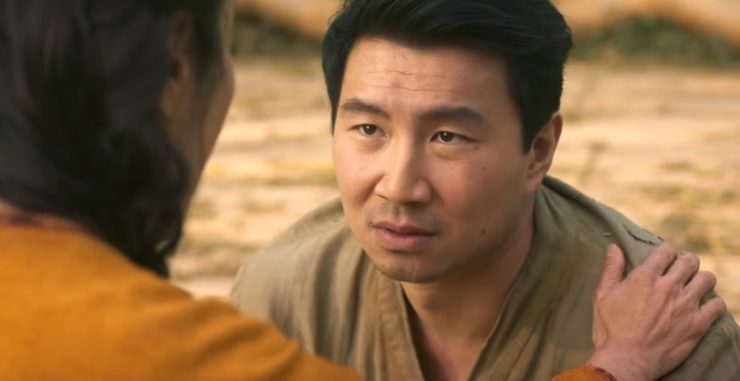
Catalytic Trauma? Young Shang-Chi watches as THE ENTIRE UNDERWORLD shows up to take vengeance on his mom. Obviously, his dad blames him for not being able to fend off THE ENTIRE UNDERWORLD as a child.
Moment of Truth: Shang-Chi faces off with his dad, communes with a dragon, defeats his dad, and then reconciles with him to try to defeat A Terrifying Inter-dimensional Evil…all in the span of about ten minutes.
Even Rocky had a montage: We get a few montages! Young Shang-Chi trains relentlessly to become a warrior, while his sister Xialing trains in secret. Later, Katy montages her way into being an expert-ish archer.
What’s your name, kid? Sean reveals his given name to Katy on the plane ride to Macau, and she zings him for going from “Shang” to “Shaun”—but come on, he was under a lot of stress—and then spends part of the plane sounding out the nuances of Shang-Chi’s name. But when she meets his dad, Xu Wenwu, she’s immediately put into the diasporic hot seat about her own Chinese vs. American names.
Quotes: “You are a product of all who came before you—the legacy of your family. You are your Mother…and whether you like it or not, you are also your Father.”
The good stuff about Shang-Chi is VERY good—a lot of the fight choreography, especially that bus scene, is excellent. The sheer breadth of references to Asian film, from Jackie Chan-style comic action to Shaw Bros training sequences to dreamy wu xia fights in the forest, is excellent. And some of the details are fun, the way “Shaun” is considered a member of Katy’s family, the easy camaraderie between the two of them that might turn romantic but doesn’t have to, and the warm, glowing flashbacks to family life with Wenwu, Li, and Xialing that make you understand how much Shang-Chi lost.
As an origin story, though, it falls into the middle of the list. We learn that Shang-Chi wants to reject his father, but also loves him. We learn that he feels guilty for abandoning his sister. We learn that he also feels guilty for not being able to save his mother—even though he realizes it would have been impossible. But that’s kind of it—just like Carol Danvers was fighting patriarchy as a concept, in a way Shang-Chi seems to be wrestling with the complexities of diasporic living as much as just living his own heroic arc. Which is kind of the point? But at the same time, I feel like I know Tony Stark in a way that I don’t know Shang-Chi yet. On the stronger side of the equation, we learn that Shang-Chi’s origin as a hero is deeply rooted in rejecting his father’s thirst for vengeance, but this is choice he’ making now, only after he hunted down and murdered his mother’s killer. And it’s a choice—Shang-Chi could have returned to his dad at any time. He could have used his training in all sorts of ways. He chooses to live a normal life, and then finally to walk a more heroic version of the path his father wanted for him, and it’s these choices that make this his origin story. On the weaker side, the monster he ultimately fights is is nebulous and ill-defined compared to the complicated villainy of Tony Leung’s Xu Wenwu, and, like a lot of our current Marvel films, the final battles devolves into CGI mush rather than focusing on the much more compelling and heartfelt Fight With Dad. It’s a good origin story, and I want to spend more time with Shang-Chi, Katy, and Xialing—especially Xialing!—but it’s not a great origin story.
15. Batman (1989)
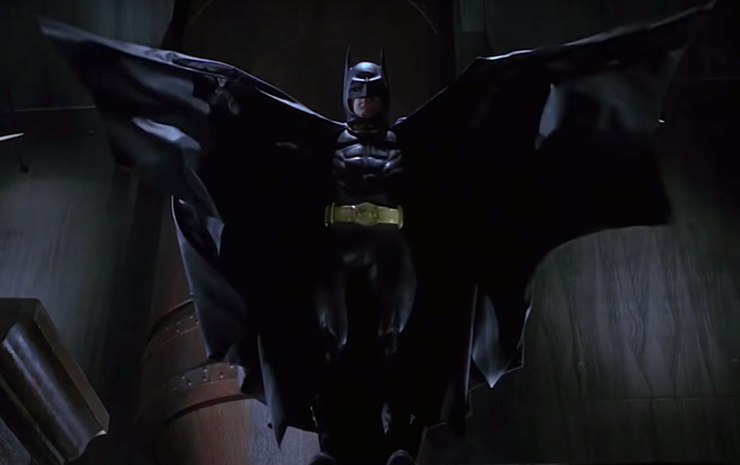
Catalytic Trauma? Pearls, popcorn, pale moonlight.
Moment of Truth: In the context of this movie it’s Batman genuinely trying to save Jack Napier, and seeming upset that he fails.
Even Rocky had a montage: At the 1:34 mark we finally get a suiting-up montage, but this Batman is already trained, and does all of his research off-screen.
What’s your name, kid? Michael Keaton growls, “I’m Batman” in reply to a mugger’s whisper-screamed “WHO ARE YOU???” and lo, many, many Warner Bros. execs had to take cold showers as they imagined the trailers they would unleash upon the world.
Quotes: “You wanna get NUTS? Let’s get NUTS!”
Burton’s Batman is much more a movie about the myth of Batman than an origin story in which Bruce Wayne becomes The Bat. The film opens on an eerie reenactment of Wayne’s childhood, when a tourist family is attacked by muggers in an alley. The muggers then discuss “The Bat” with one of them saying that he drains his victims’ blood to set a fairly horrific tone. Batman doesn’t save the family, and when he catches up with the criminals he doesn’t even deliver them to the cops. Instead he tells one of them to spread his legend through the underworld.
The first way we see the Actual Tragic Events of Crime Alley (which is just called the “alley at Pearl and Phillips Streets” in this version) is via microfiche, as Vicki Vale and Knox research Bruce Wayne’s past. And Vicki is only researching Wayne because she’s falling in love with him—if she suspects that he’s also the Batman she came to Gotham to investigate, she gives no sign of it. Only after we watch them muse on Bruce’s tragedy do we get a flashback that gives us his point of view—a flashback triggered by the movie’s biggest change to the source material.
In this version the murder of Thomas and Martha Wayne wasn’t exactly a random act of violence or desperation. The man who killed the Waynes was a young mob goon named Jack Napier, who, a few decades later, falls into a vat of acid when his hand slips out of Batman’s. Napier’s intentional act of violence creates Batman, and Batman’s failure to save Napier creates The Joker, and we only see Bruce’s memory of that night in the alley as he connects all the dots and realizes the truth. While this is interesting, it also turns Batman’s quest for justice into a much more self-centered story—a goth therapy session/LARP that, almost accidentally, results in a lower crime rate for Gotham as Bruce Wayne works out his trauma.
14. Aquaman (2018)

Catalytic Trauma? Being left by his mother; learning of her execution.
Moment of Truth: There are a few options here, but I think the best one is when he communicates with the Leviathan rather than simply fighting her.
Even Rocky had a montage: Arthur’s training sessions with Nuidis Vulko are shown as flashbacks throughout the film, so when he fights Orm we can see the results of the training.
What’s your name, kid? Pundits talk about the mysterious “Aquaman” in the same bemused tones they use for the existence of Atlantis, even though both Aquaman and Atlantis clearly exist?
Quotes: “Permission to come aboard?” obviously, with a special nod to “YOU CAN CALL ME…OCEAN MASTER” because come on.
Like Man of Steel, Aquaman scatters its origin story across a “Present Day” narrative of Arthur Curry claiming his identity as an Atlantean despite a lot of negging by a bunch of underwater eugenics enthusiasts. This movie ranks higher than MoS because this movie is, I mean, it’s…
Look. There’s a scene where Willem Defoe and Ghost-Hunter Ed Warren face off with Dolph Lundgren, and they’re on battle sharks? And Lundgren is on a giant armored seahorse? (And the animals glower at each other because obviously seahorses are the natural enemies of sharks, we all know this.) And at some point my brain shorted out? This movie is FUN. Extremely fun. Especially when it makes no sense, which is most of its runtime. Hence, it’s higher.
Like Man of Steel and 2003’s Hulk, Aquaman frames Arthur’s journey with the story of his parents. The romance of Atlanna, Queen of Atlantis, and Thomas Curry, lighthouse keeper of, um, somewhere in the Northeast U.S., is told over the course of a few vibrant scenes that play like a fairytale. (Or a Splash parody, to complement the Big riff in Shazam.) Arthur begins his superheroic journey during a field trip to an aquarium, when he’s bullied for talking to fish. A shark rams itself into the glass to defend him, and his eyes glow as all the fish in the tank collect behind him like an army.
We get a classic training montage dotted through the film, as Nuidis Vulko, Vizier of Atlantis, gives Arthur secret swimming and combat lessons. Vulko is played by Willem Defoe, who at various points in the movie uses the same accent he did as Karl in The Life Aquatic with Steve Zissou, but, unfortunately, never discusses the finer points of lighthouse-keeping with Thomas. He’s also the one who eventually breaks the news that Arthur’s mother was sacrificed to the Trench for loving his father, thus giving Arthur a second Catalytic Trauma. The rest of the film becomes the origin of Arthur-as-King, as works to stop his half-brother, Ghost-Hunter Ed Warren, from waging war on the land-dwellers, and searches for the Magical Trident of Atlan.
I have to mention, the movie starts out as a Splash parody, but then it turns into an aquatic Blade Runner, with jellyfish and coral instead of holographic advertisements (all the promise of seapunk, fulfilled at last!) it briefly riffs on Top Gun, and in a final nod to the cinema of the ‘80s the writers have former tempted-Christ Willem Defoe say “The king is risen” when Arthur comes back with the Trident. All of these things filled me with joy, but the reason this movie ranks so improbably high is that Arthur is a demonstrably different person and hero by the end. He realizes that he created an enemies during his journey, and learns from that. He chooses to speak with the Leviathan rather than fighting her. He doesn’t just spare Ghost-Hunter Ed Warren’s life, but also gives him time to have a touching reunion with their mother, and seems to want to repair their relationship. He’s thinking more like a ruler of people—the bridge between Surf and Turf his mother hoped he would become.
13. Ghost Rider (2007)
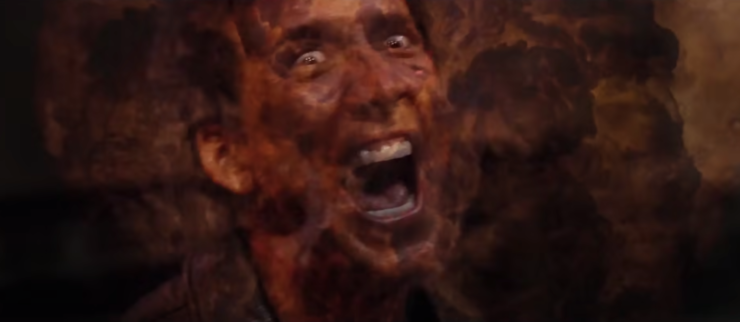
Catalytic Trauma? Johnny Blaze gets totally hosed by Satan; his dad dies in a Devil-related bike accident, forcing him to abandon his One True Love.
Moment of Truth: When Satan’s kid, Blackheart, kidnaps Johnny’s One True Love, he enlists help from the previous Ghost Rider, Sam Elliot, to face off with the minions of Hell.
Even Rocky had a montage: Since Ghost Rider is more of a possession than a superhero transformation, we don’t get a traditional montage? But we do see Johnny practicing with his fireballs.
What’s your name, kid? Ghost Rider is a spirit that possess people who are in contract to Satan, then moves on when those people die. There have been many Ghost Riders.
Quotes: “You can’t live in fear.”
Young Johnny Blaze is fed up with his dad and wants to run away with his girl, but when he learns that his dad has been hiding a terminal cancer diagnosis, he’s so heartbroken that he sells his soul in exchange for his dad’s life. That’s one hell of a start to a story. Of course the Devil’s a huge jerk about it, kills his dad in an “accident”, and thus we cut to Nicolas Cage as adult Johnny doing increasingly crazy stunts to try to prove that he has no fear. This leads nicely into his stint as Ghost Rider. At first the Rider is a spirit possessing Johnny rather than a true alter ego. The Rider hunts down soul contracts—people who sold their souls to the Devil—and along the way punishes any random criminal who strays across his path. The Rider’s powers are cool as shit. He makes criminals stare into his eyes, forcing them to experience the pain they’ve caused others until said pain kills them. Johnny slowly learns to control his powers, which allows him to defeat the Devil’s kid, defy the Devil, and make amends to the girl whose heart he broke. ALSO there’s a scene where Johnny gets locked up in a jail cell, and when the Rider takes over he destroys everyone in the cell with him except for a lone Black teen (the only one who tried to defend Johnny in his human form) and this ridiculous over-the-top movie makes a point of showing the Rider pointing at the kid and saying “Innocent.”
I’ll admit, to my shame, that I had not watched Ghost Rider until I was researching this list, and am now mourning my many Ghost Rider-less years. This film posits that a stunt bike rider would be, seemingly, among the most famous men in America? Nicolas Cage goes full Elvis for Johnny Blaze, surrounds himself with towers of occult books, and eats jelly beans out of a martini glass? Eva Mendes consults a Magic 8 ball while she waits for Johnny Blaze at a restaurant, then gets blitzed on white wine and begs the waiter to tell her she’s pretty? Donal Logue says “I got a hunting dog named Lucky. He’s got one eye and no nuts” and “You’re reading this comparative exponential religiosity crap and it’s getting into your brain!”—both of those lines are in this movie?? Sam Elliot plays a previous Ghost Rider who now works as a cemetery caretaker, but who should have died years ago but just…didn’t??? Sam Elliot tells Johnny: “You sold your soul for the right reason. That puts God on your side.”
I think this movie should be the U.S. national anthem.
12. Superman: The Movie (1978)
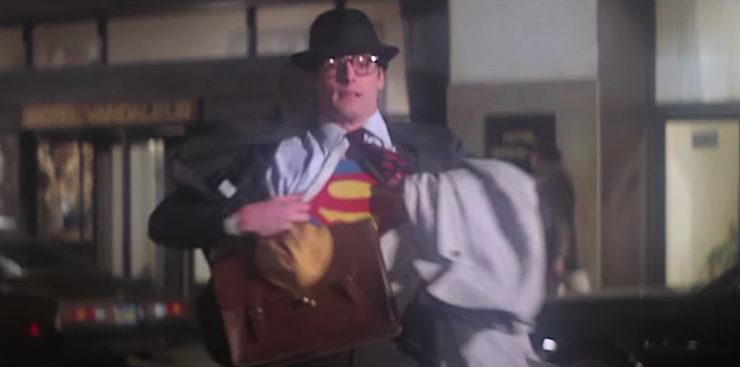
Catalytic Trauma? Explosion of Krypton; not being able to save his (human) dad.
Moment of Truth (and Justice, and the American Way): I’m going to say it’s when he doesn’t act like Superman, and instead defies his (space) dad’s instructions and Time Itself to save Lois’ life. (I think somewhere between that scene and Snyder’s blue steel gloomfest there is a perfect Superman movie.)
Even Rocky had a montage: When teenage Clark retires to the Fortress of Solitude, we hear Jor-El’s instructions as the camera pans through space, implying that Clark is learning his origins and going on an interior journey of understanding. Thirteen years pass this way, and then we see Superman fly out of the Fortress to rejoin life on Earth.
What’s your name, kid? A twitterpated Lois murmurs “Superman” to herself, and then just names him that in the Daily Planet the next day. Let’s hope she spelled it correctly.
Quotes: “I am here to fight for Truth, and Justice, and The American Way!”
This is one of those movies that I saw in the fog of early childhood and didn’t return to until, well, I think until this post actually? As a superhero movie it doesn’t completely hold up for me—the humans in the story don’t react to a superhuman in a realistic way, and the attempted comic relief hasn’t aged well. As an origin story, however, Superman still does some amazing stuff, especially when compared with Man of Steel.
The movie’s opening scenes are economical and earn their serious tone, as Marlon Brando’s Jor-El bestows a quasi-Biblical blessing on bb Kal. Krypton itself is a beautiful alien world full of crystal, and Kal’s pod looks like a star falling to Earth—to my mind far more magical than the H.R. Giger look of Snyder’s Krypton. We’re shown Clark’s teenage years in a few quick scenes that sketch in his loneliness, the deep love he feels for the Kents, and the morality they’ve instilled in him. For me the misstep comes when Clark moves to Metropolis and his work as a superhero brings him up against Lex Luthor’s plot to nuke California. Lex’s plan is catastrophic, but it clashes badly with Ned Beatty’s turn as the bumbling Otis and Valerie Perrine’s Miss Teschmacher (and it doesn’t help that she tells us that he abuses her). Even worse, we never get a sense of Superman and Luthor as real nemeses—when Lex traps Supes, it feels like another plot device rather than the culmination of a plan, and then the film doesn’t sit long enough with either Superman’s panic, or Miss Teschmacher’s change of heart, for the dire stakes of the situation to land. Superman saving Miss Teschmacher’s mom leads directly to him not being able to save Lois, which in turn leads to him reliving the memory of Pa Kent’s death, and deciding to defy Jor-El’s biggest rule, which is all rich, heady stuff! The alien raised as man has to choose love and find a new path for himself, knowing that at least one of his dads would be furious! But his decision is so surrounded in fluff that the emotion doesn’t come through—and then we’re dropped right back into a bit of comic relief between Lois and Jimmy Olsen.
Speaking of, and I’m probably alone here, but if Jimmy Olson was going to insist on being rock-stupid enough to clamber out onto a cliff to get a photo of a national landmark that has already been comprehensively photographed, he deserved to drown at The Hoover Dam. Superman should have left him dead, and I’m not afraid to say it.
11. Deadpool (2016)
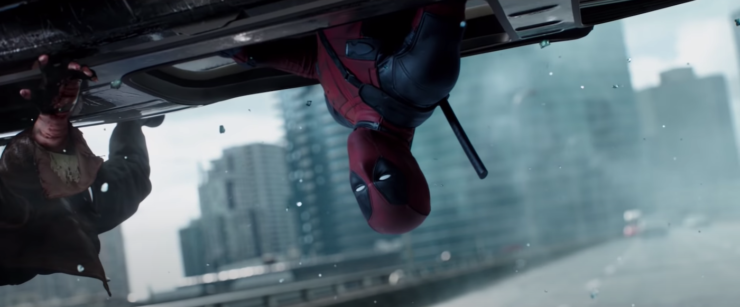
Catalytic Trauma? While he’s still a regular human, a cancer diagnosis knocks Wade Wilson into a new life. But once he’s in the program that is never quite named as Weapon X, and learns that the higher-ups are turning him into a mindless super soldier, he has another decisive moment in a hyperbaric chamber, choosing to set himself on fire and blow the facility up for a chance at death/freedom. This is what transforms him into Deadpool.
Moment of Truth: As Wade, it’s probably his decision to leave Vanessa to try to spare her—misguided though it is, it does at least come from a well-meaning place; as Deadpool his Moment of Truth comes in the bathroom of the strip club, psyching himself up to reveal himself to Vanessa and apologize for his earlier Moment of Truth.
Even Rocky had a montage: At the one-hour mark we get a riotous montage of DP butchering his enemies, and upgrading his suit after each fight.
What’s your name, kid? Wade names himself after the Sister Margaret’s Home for Wayward Girls’ “dead pool”—an ongoing bet on which merc is most likely to bite it each week. For a brief shining moment he is Captain Deadpool, before he thinks better of it.
Quotes: “Maximum effort!”; “A fourth wall break inside a fourth wall break. That’s, like, sixteen walls!”
I know, I know, Deadpool’s not exactly a hero. But his movie incarnation acts pretty heroically, and I wanted an excuse to rewatch the movie, and I wanted to give Ryan Reynolds another spot on this list to make up for the poor showing of Green Lantern, so: my list, my rules, my coffee.
For maximum fourth wall breakage, Deadpool intercuts DP’s current quest (finding and murdering the shit out of Francis) with the story of mercenary Wade Wilson’s relationship with Vanessa Carlysle, his battle with cancer, and his subsequent desperate stint in the Weapon X meat grinder facility. This works extremely well, as we meet quippy, un-killable Deadpool before flashing back to Wade, who was already 70% snark, but also a human—the kind of human who will take a pro bono gig to protect a teen girl, give up sex for Lent, woo his girlfriend with a ring pop, and be as scared and vulnerable as anyone would be in the face of a Stage 4 cancer diagnosis. This shows us his growth as a superhero who can take on teams of bad guys (and Colossus, sort of) but more important it shows us that the man who had a well-hidden heart of gold a few years ago is now an obsessive and mentally unstable antihero. Grounding us in Wade’s pre-DP reality is a wise choice given how wacky Deadpool’s world can get, especially once Cable and time travel shenanigans are introduced in the sequel.
10. Fast Color (2018)

Catalytic Trauma? Ruth’s powers were so great they drove her to addiction to dull them; one of her earthquake/seizures nearly killed her infant daughter, leading her to hand the child over to her mother, Bo
Moment of Truth: Ruth realizes she can control her seizures, and with them, her power—once she lets herself focus on her love for Lila
Even Rocky had a montage: We see Lila demonstrate her ability, then she and Bo coach Ruth through a few training sessions to help her get back in touch with her own powers.
What’s your name, kid? Bo, Ruth, and Lila go by their given names throughout the film.
Quotes: “Our abilities can’t fix things. If something is broken, it stays broken.”
I’ll admit I missed Fast Color when it was first released—but sometimes the fun of doing a list like this means you discover a new gem. THIS MOVIE. It’s not a traditional superhero film, but it is very much a story about a people with extraordinary powers learning to use them for the good of humanity. Honestly it feels like it might have been inspired by N.K. Jemisin’s Broken Earth Trilogy. I don’t want to give too much away in case you haven’t seen it, but I will say that it does the thing I crave most in these kinds of films: it emphasizes the wonder of having superpowers. Rather than devolving into the sort of giant, mushy battle that a lot of DC and MCU films do these days, it tries to tell a more realistic story about what it would be like to be superhuman. As an indie film, it’s reach sometimes exceeds its grasp, but holy crap is it refreshing to watch a superhero movie about people.
There are three superhumans in Fast Color, but the one with a real heroic arc is Ruth, played beautifully by Gugu Mbatha-Raw. Ruth has the classic super-problem that her powers are simply too powerful to be contained—not only do they cause her enormous pain and psychological issues, but they also make her a target for nefarious government officials who want to “study” her. But balancing the traumatic elements is a sense of hard-won hopefulness that felt like rain in a desert to this superhero-saturated movie critic. Plus the idea of heroic arc that’s all about going home and trying to repair your family, and confront your mistakes, rather than going out into the world to fight people? And the movie gives us a hero who takes their sobriety seriously? once again, the more I thought about it the further the movie bumped up the list.
9. Shazam (2019)
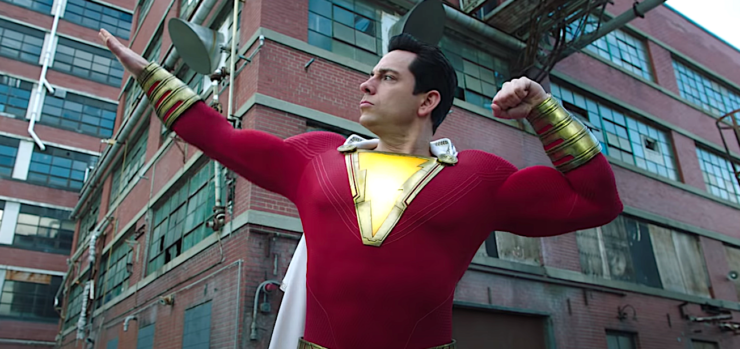
Catalytic Trauma? Being abandoned by his mom and bounced through the foster care system.
Moment of Truth: Defending his new foster sibling from bullies; going home to face the nefarious Dr. Sivana and save his family rather than wallowing in his mom’s continued rejection.
Even Rocky had a montage: Billy Batson tests himself for every superpower his foster brother Freddie can think of, while Freddie records the results and uploads them on Youtube. (I should also mention that the two kids celebrate Billy’s new superpowers on the Rocky steps.)
What’s your name, kid? Shazam is actually an acronym for the powers the hero wields: the wisdom of Solomon, the strength of Hercules, the stamina of Atlas, the power of Zeus, the courage of Achilles, and the speed of Mercury; it’s also what Billy has to say to activate and deactivate these powers.
Quotes: “Shazam!”
I’m just going to say this upfront: I don’t think I actually like Shazam as a film. While I think there’s good stuff in it, the wild tone shifts, violence, and multiple abusive parental figures really didn’t work for me. However, as an origin story it’s pretty strong—it’s the rare SEXTUPLE ORIGIN—so I bumped it up a bit despite my own misgivings.
Billy Batson’s arc follows most of the typical origin beats: in his first 14 years he’s separated from his mother, has a hardscrabble upbringing in various foster homes, and runs away repeatedly to search for his mom. We pick up his story when he’s sent to live with the Vasquez family, parents Rosa and Victor (both former foster kids themselves) and their kids, Freddy Freeman, a superhero fan who is closest to Billy in age, Mary Bromfield, the eldest, who’s applying for early admission to colleges, Pedro Peña, the shy one, Eugene Choi, the obsessive gamer, and Darla Dudley, the youngest—and possibly the most adorable child ever put on film. The genuine love shared by the family challenges his “always look out for #1” philosophy, and leads straight to his call to be a superhero. When he defends Freddie from bullies, he’s whisked away to the Rock of Eternity and given the powers of Shazam—not because he’s worthy, but because Shazam is dying, and he has to give them to somebody. Billy initially uses his new “adult” body to buy beer and hit a strip club, and his electro powers to hijack ATMs. When Freddie posts Billy’s superpower tests on YouTube, Billy suddenly become very famous, very fast, and the validation goes straight to his emotionally-malnourished head. Even after he causes a serious accident by showing off, he still focuses on the fact that he saved the people in the end, so, everything’s cool, right? Hey, he can catch a bus now!
Since Billy hasn’t really trained, has no mentor aside from Freddie, and is a terrified teenage boy, he spends the middle chunk of the film running away from his first supervillain, failed Shazam Dr. Thaddeus Sivana. His foster siblings find his birth mother for him, and for a moment he clearly thinks he might be able to return to normal life, and wants nothing more than to put superhero-ing behind him—but she rejects him. The last third of the movie is devoted to Billy learning to Use His Powers For Good and Realizing That His True Family Has Been Here All Along. This leads us into the other five origin stories—by far the most interesting in the film. Billy retrieves Shazam’s staff, and uses it to share the power with his siblings, who each discover their own strengths as they battle Dr. Sivana together. Basically the last half hour gives us a micro version of the movie, with each kid getting a moment in the spotlight.
Now, why is it at #8? I would argue by opening the movie on Sivana’s origin the writers undercut Billy’s story. We see that Sivana was also an abused kid, he had a shot at being Shazam, failed because of a total lack of mentorship, and finally became evil because it was the only way he could wield any power in his life. Billy doesn’t seem to be any better, at heart, than young Sivana. If the movie had wrestled with that it would have worked a lot better. Instead, the overall tone is so dark and mean-spirited that, despite wanting to give Darla the world, I cant bump it up any higher than this.
8. Captain America: The First Avenger (2011)
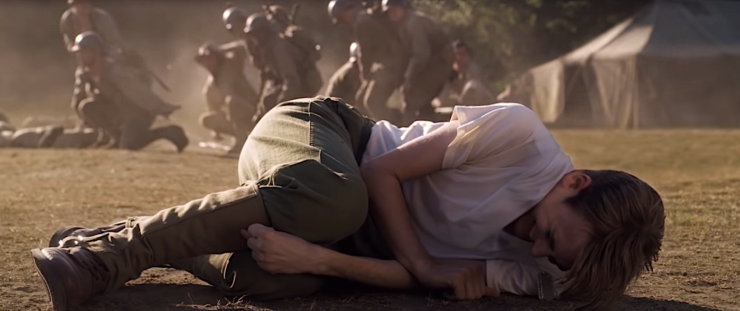
Catalytic Trauma? Steve Rogers doesn’t really have one defining trauma. He’s a chronically-sick orphan who gets his ass kicked a lot—we’re dealing with a slow trauma build-up here.
Moment of Truth: I don’t care that it’s cheesy, I don’t care how often I see it, that grenade scene, man. I could watch it all day.
Even Rocky had a montage: We see Steve struggle through Basic Training; immediately after the serum takes effect he has to chase down Dr. Erskine’s murderer and we learn, along with him, that his body is now impossibly fast and strong.
What’s your name, kid? The Star-Spangled Man with a Plan is declared “Captain America” by the marketing team who use him to sell war bonds through stage shows and movies. Later, in his one moment of successful flirting with anyone other than Bucky, he jokes that he outranks Agent Carter.
Quotes: “I could do this all day.”
On the one hand, this is a great, inspiring origin story about a kid from Brooklyn who becomes a hero. On the other, this is the first of the MCU films to show some of the strain of having to link into the giant, decades-spanning, multidimensional Marvel Cinematic Universe, which leads to the origin story getting a little buried.
Steve Rogers is short, thin, and riddled with chronic health problems. His dad died from mustard gas and his mom from TB. Now, some people might view this as a convenient loophole during wartime—the Army literally won’t let him join, and he could help with scrap metal drives or work in a factory and still do important work against the Nazis. But for him, the idea that he might live through the war while other men are risking their lives is unacceptable.
But here is both the great strength of First Avenger as an origin story, and the major ding against it: Steve Rogers is a hero from the minute we see him fighting in an alley, using a garbage can lid as a shield. He’s a hero when he jumps on the grenade, when he chases the Nazi who kills Dr. Erskine, when he leads a seemingly hopeless fight against the Red Skull, and when he chooses death by plane crash rather than allowing the Red Skull to destroy New York. Steve Rogers doesn’t change: he is “No, you move” personified. But in the context of this particular story, where Nazis are plotting to use occult weaponry against the rest of humanity, his basic heroism works, and the fact that once again, given the chance to spend the war as a poster boy for bonds, he instead throws himself into a dangerous mission, and then also offers himself up for court martial immediately afterwards, shows that his pre-serum sense of justice and duty are still the core of his being, no matter what he looks like.
7. Doctor Strange (2016)
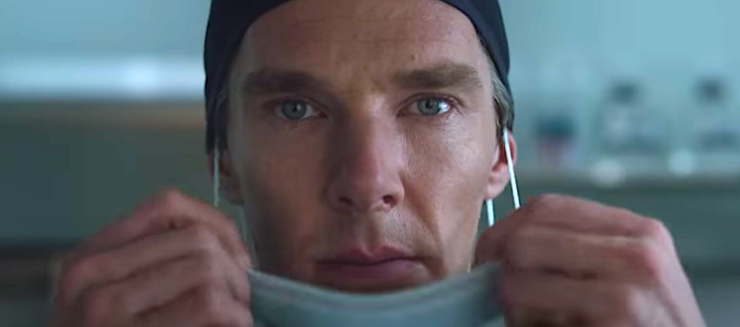
Catalytic Trauma? Probably when the selfish dope drives himself off a cliff.
Moment of Truth: After The Ancient One shows Dr. Stephen Strange the secrets of the universe, and then throws him out for being a selfish dope, Strange abases himself and sits outside the door begging to be her student, no longer caring about money or status or his own ego.
Even Rocky had a montage: I have a soft spot for this one because we get a montage of him reading books in addition to some magical practice.
What’s your name, kid? His name is Stephen Strange, and he is a medical doctor.
Quotes: “Dormammu! I have come to bargain.”
The reason Doctor Strange is at #6 is that it gives us one of the most dramatic arcs of change on the entire list. We see a man who is ridiculously successful in his chosen field, arrogant, self-absorbed, who enjoys humiliating his colleagues and thinks that inviting an ex to watch him win an award counts as a date. There are a few points when he declaims about having taken an oath to save lives, but he also only chooses difficult cases so he can build his reputation. We see him turn several down because either they won’t bring him fame, or because he’s afraid they’ll smudge his track record. He wrecks his car, destroys his hands, and endangers other people through his own thoughtlessness, then lashes out at everyone who tries to help him.
So when he finally gets to Kamar-Taj and meets The Ancient One, it’s really gratifying to see him beg for help, then lash out at her, and then, after she knocks him out of his body, upend all of his beliefs and preconceived notions to create a new life. In some ways, Doctor Strange is a derivative MCU film, and obviously the casting/whitewashing could have been dealt with better, and there are moments in the early scenes when it turns into a Very Special Episode of House. BUT, it does make for an excellent origin story because our hero genuinely grows and changes during his journey. The Stephen Strange who watches the snow with the Ancient One as she dies is not the same man who berated Christine Palmer, or the one who wrecked his car. By the time he condemns himself to a (potentially endless) cycle of agony to stop Dormammu, Stephen Strange has become a believable superhero. He earns that final shot as Doctor Strange in the New York Sanctum, with the cape, goatee, and dramatic white highlights.
6. Venom (2018)
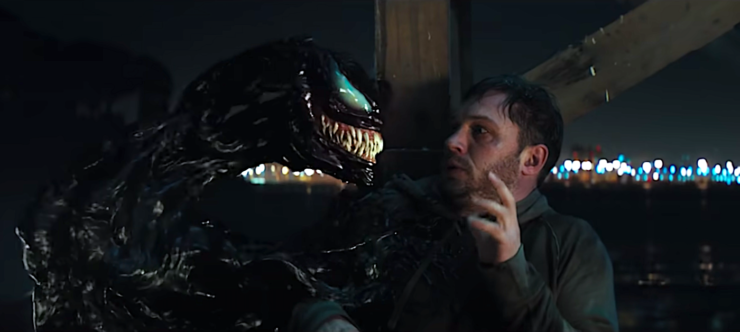
Catalytic Trauma? Eddie Brock gets fired and dumped as a direct consequence of his own bullshit, which is GREAT; his body is colonized by an alien symbiote, which turns out to be GREAT… once he gets used to it.
Moment of Truth: For Eddie: standing on the Golden Gate Bridge looking for all the world like he wants to jump, but then deciding to investigate the nefarious Carlton Drake; his shockingly sincere apology to Anne. For Venom: choosing to work with Eddie to prevent the invasion of Earth, even though it might mean their collective death.
Even Rocky had a montage: We get several action sequences of Eddie learning what Venom can do; multiple eating montages as Eddie tries to figure out how to feed his new BFF. (RIP lobsters.)
What’s your name, kid? Venom is the Symbiote’s name, and there are a few arguments over the uses of “we” and “I”, but I believe these two crazy kids are gonna work it out.
Quotes: “Ah, fuck it. Let’s go save the planet.”
Ah, Venom. I debated including it, but I decided given the turn toward the end of the film it definitely rated a place, and then the more movies I watched and the more I pondered the further up it crept until it landed here in the top five. A controversial choice? Sure. BUT SOME OF US STILL BELIEVE IN LOVE.
Eddie Brock is an edgelord investigative journalist who steals confidential info from his fiancee, lawyer Anne Weyring, in order to expose the nefarious deeds of scientist/Elon Musk-parody Carlton Drake. In short order he’s fired, Anne is fired, Anne dumps Eddie, Eddie spirals, and there’s no one to stop Drake when he starts trying to get alien symbiotes to fuse with not-exactly-willing human subjects. Eddie finally removes is head from his ass and tries to investigate Drake, only to be symbioted himself. His symbiote, a charming fellow by the name of Venom, decides he likes Eddie, works with him to keep both of them alive, thwarts an alien invasion, and concocts a scheme to win Anne back.
Is it more of an antihero movie than a superhero movie? Of course. But is it also about an antihero who objectively does more good for humanity than, say, Darkman? Resoundingly yes. And honestly this is all moot cause this movie’s a romcom. Venom kisses Eddie during one of their rare moments apart! Their love literally saves the world!
Symbrock is OTP 5-ever.
5. Batman Begins (2005)

Catalytic Trauma? …stop me if you’ve heard this one before. (Sorry.) Nolan’s innovation here is to stress young Bruce Wayne’s bat-phobia, which was triggered when he fell into a bat-infested well, right before the TRAGIC EVENTS OF CRIME ALLEY. No wonder this version of Bruce is a mess.
Moment of Truth: Adult Bruce decides not to execute a man without trial, and instead… allows that man to burn to death without trial, along with all non-Liam-Neeson members of The League of Shadows. Hm.
Even Rocky had a montage: The training sessions with Liam Neeson are brutal and beautifully show his transformation from scrappy underworld imposter to warrior; Bruce, Alfred, and Lucius Fox upgrade his armor after each night out as The Bat.
What’s your name, kid? There’s a lot of talk about becoming a symbol, being more than a man, becoming what men fear, and becoming The Bat. But after all that, it’s Dr. Crane who calls him “The Bat…man” in a voice charged with fear, excitement, and a nigh-sensual longing that made me want a whole other movie.
Quotes: “It’s not who I am underneath, but what I do that defines me.”
Let’s begin by acknowledging that the true hero of this film is Cillian Murphy’s bone structure. Or maybe his haunting blue eyes.
Nolan’s take on Batman is committed to tying all the threads and themes of the character together into a… let’s just call it a bat king? We open with smol Bruce and his friend Rachel playing until Bruce falls into a well. He’s obviously hurt, but even worse than that: the well is connected to an underground cave full of bats, who swarm the poor kid and terrify him. His dad comforts him by saying that “we only fall so we can learn to stand back up”, and cheers him up further by showing him a gift he’s gotten for his mom, a beautiful string of pearls. Those pearls. Thomas Wayne asks for smol Bruce’s opinion, and shores his confidence up by including him in the surprise for his mother—two guys who want to make the woman in their life happy. It’s sweet. Which of course makes it all the more brutal when Bruce has a panic attack during the opera they’re attending (Die Fledermaus), begs to leave early, and then the family is attacked in the alley.
Is this the only version of the story where the murder of the Wayne’s is a direct result of Bruce’s needs? The rest of the film turns tightly, obsessively on the question of guilt and responsibility, weakness and strength. Bruce learns a kind of strength in the underworld, and then from Ra’s Al Ghul, but ultimately rejects it in favor of his father’s kind of strength. This is a great engine for an origin story, as Bruce has to find a balance between his playboy persona and his Batmanning, ricochet between two different father figures, Alfred and Lucius, and his Walking Conscience, Rachel (setting us up brilliantly for The Dark Knight), and finally defend his home. The only problem here is that Nolan’s typical dourness makes the Billionaire Playboy aspect perfunctory, where it might have been fun to see Christian Bale contrast his growly vigilante persona with a slightly lighter take on a callow rich preppy man—Patrick Batman, if I may?
4. Iron Man (2008)
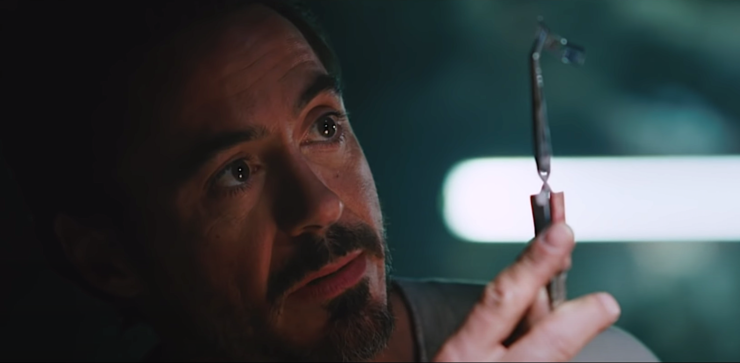
Catalytic Trauma? Tony Stark gets blown up and held hostage in a CAVE; then he has to recreate his Arc Reactor on the fly and build his first Iron Man suit FROM A BOX OF SCRAPS.
Moment of Truth: When Stark learns that his weapons are being used against terrified refugees in Afghanistan, he hops into his barely-tested Iron Man suit and flies to the rescue.
Even Rocky had a montage: This movie is at least 60% montage, and it’s great. After he escapes the Ten Rings, Tony builds and tests a new suit, flies around Malibu and Venice, and tries to go into space like a dumbass.
What’s your name, kid? The papers name him, then he defies Agent Coulson’s strongly-worded notecards and runs with it.
Quotes: “I am Iron Man.”
I’m always fascinated by the decision to hang the MCU on Iron Man. Like of all the heroes to choose as your launching point, your leader, why did Marvel choose Tony Stark out of the ridiculous stable of heroes at their disposal? And why does it work so well? Some of it is timing—Iron Man came out just as the U.S. was at the tail end of the second Bush Era, and the movie was able to pull off an amazing tap dance critiquing the idea of the U.S. as warmongers, condemning terrorism, giving us a military hero while saying that weapons manufacturing is bad, and blowing enough stuff up to distract everyone from how the movie simultaneously celebrates military might and condemns it.
But the other reason is that this is one of the best origin stories ever.
Unlike most of the other MCU films here, Iron Man doesn’t have the burden of tying into the giant mythology around it. There’s no tesseract, no Thanos, no HYDRA, no war between Kree and Skrulls—we get a couple appearances from Coulson and the final post-credits intro of Nick Fury (still to this day the single greatest audience reaction I’ve ever witnessed in a movie theater), but other than that this is purely about Tony becoming not just a superhero, but a better man—but also not changing too much from the witty, charming, billionaire playboy we meet in the opening.
This movie is goddamn efficient. I watched a lot of superhero movies to write this, and Iron Man gets its story across in perfect little packets that don’t feel like packets, because the writing is sharp and the characters are so fun that you don’t realize how carefully the info dumps are being doles out. The movie pulls a great trick with timing to frame the origin story in the most arresting way. We begin in media res, but we don’t even realize that at first. Tony Stark is supposed to be coming to the end of the last day of his life—not that he knows that. He’s drinking whiskey and taking selfies with soldiers in a military caravan in Afghanistan, the caravan is attacked, Stark escapes the truck, he sees a missile with the Stark Industries logo but can’t get away and is hit with shrapnel. We watch blood blooming out of his chest. Smash cut to Tony, a hostage on video, surrounded by terrorists who are clearly demanding ransom. Smash cut to the movie’s title. Smash cut to “36 Hours Earlier.”
The Tony Stark that we meet 36 hours earlier is callow and glib in public, flirting with women (and trying to flirt with Rhodey, who keeps shooting him down), and trotting out justifications for his war profiteering. In private he’s a giant nerd (losing hours to rebuilding engines), but still pretty callow (forgetting Pepper’s birthday, not giving a single shit that he’s three hours late for an appointment). But the great thing is that after being attacked, nearly dying, and being held hostage, he’s still snarky and glib, and he’s still a huge nerd. It’s just that now that he realizes how much damage he’s done, he wants to work to be a better person, and use his wealth to help people instead of generating more wealth. He’s capable of dropping his wall of snark to tell Pepper that he believes he lived for a reason, but he wants the fame and awesomeness fo being a public superhero. Of course the best aspect of this is that the narrative arc of him becoming a hero unfolds over the following decade of the MCU, but every single issue is seeded in this movie.
3. Unbreakable (2000)
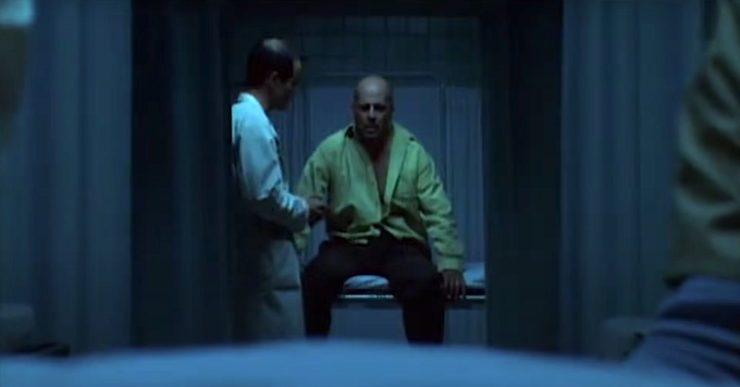
Catalytic Trauma? David’s survives a terrible car wreck without a scratch, but it’s the trainwreck that he also survives without a scratch that finally forces his superheroic hand.
Moment of Truth: There are a few, but I think the strongest moment is when David has to face his fear of drowning, but then chooses to stay and deal with the janitor. Again, it’s complicated—he rescues the children, but they rescue him first; he frees them from a villain, but can’t save their mother. And this is no triumphant moment of coming into power. Instead the whole scene is shot through with terror and despair.
Even Rocky had a montage: David and his son spend some nice bonding time seeing how much weight David can lift.
What’s your name, kid? This is Shyamalan, so while the hero is grudging and depressed, and would prefer to just be David Dunn, thank-you-very-much, Elijah Price—who already has already an objectively cool name—stalks around in tailored purple finery calling himself “Mr. Glass.”
Quotes: “Do you know what the scariest thing is? To not know your place in this world, to not know why you’re here.”
Unbreakable is the dark version of Shazam.
For all that Shyamalan disguised his film’s true nature, it follows every beat: David has a several catalytic tragedies—first the car wreck that confirms his superstrength—which he hides—then the train wreck that forces him to reckon with his abilities. He and his son (a superhero superfan) test his powers, culminating in his kid pulling a gun on him because he wants to know if he’s bulletproof. David gradually comes to believe in his own powers, and tests them, he goes out on his first real Heroic Quest, he develops a relationship with a supervillain, is almost killed when said supervillain figures out his weakness, and finally faces off with the villain at the end, and, at least temporarily, triumphs over him.
It follows the beats perfectly, but it occupies an odd place since the film is so fucking bleak it saps every bit of joy from the superhero origin story. David is NOT happy to discover that he has these powers, and his heroic journey is so heavily weighted toward the “must come with great responsibility” side of the equation that the film reads almost like horror. Plus, of course, he only truly comes into being because of Mr. Glass sabotaging the train. In the same way that Aquaman “creates” Black Manta or the very existence of Batman “creates” the Joker, in this case the movie’s villain quite consciously creates a hero to test himself against. Which casts the whole “origin story” aspect of the film in a much different light—Through a Mr. Glass Darkly, basically.
2. Spider-Man (2002)
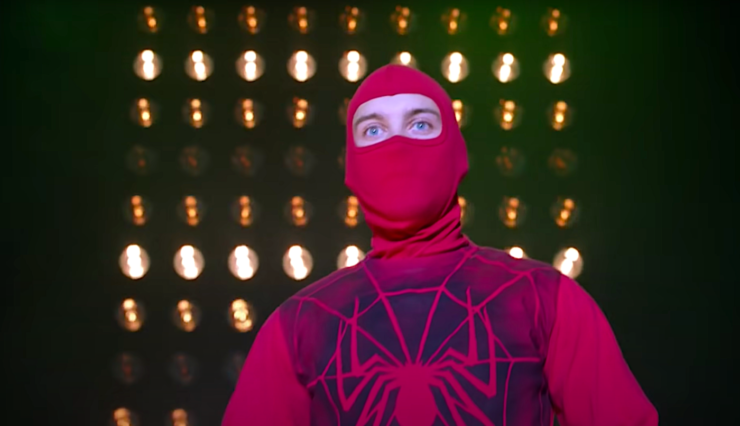
Catalytic Trauma? THE TRAGIC DEATH OF UNCLE BEN
Moment of Truth: Realizing he’s the one who let Ben’s murderer get away, and deciding to actively use his powers for good rather than to make money or be famous as part of becoming “responsible”; turning down the Green Goblin’s partnership, even though he knows Gobby might kill him.
Even Rocky had a montage: He practices wall-crawling and web-shooting a bit on his own, but he really learns how to swing when he’s pursuing Ben’s murderer.
What’s your name, kid? A wrestling announcer overrules his idea of “The Human Spider” and dubs him “The Amazing Spider-Man”!
Quotes: “Whatever life holds in store for me, I will never forget these words: “With great power comes great responsibility.” This is my gift, my curse. Who am I? I’m Spider-Man.”
This movie, more even than Bryan Singer’s X-Men, is the one that set the template for almost every film on this list. Here you have the perfect dance between personal stakes (Ben’s death, keeping MJ and Aunt May safe, juggling college, day job, superheroing, and bills) and BIG stakes (Green Goblin attacking New York, saving people from catastrophe, honoring Ben’s memory) in a movie that’s also fun from the first scene to the last. While of course some moments have aged poorly, and Sam Raimi’s idea of how teens speak and behave is a little outdated for 2001, overall the movie is still as exhilarating and heartwarming now as when it was released.
Best of all though is how Raimi makes this Peter’s story, but never forgets to show us the larger story unfolding around him. After all these years, this is still the superhero origin that does the best job of showing how a regular human adapts to his powers, while also reminding us that there’s still a human under the suit. Peter’s a teenage boy: after his mutation he admires his new physique in the mirror, and, yes, looks into his underwear to see how he’s changed; he tells Aunt May she can’t come into his room because he “exercising” and “not dressed” and then turns to face a bedroom that is festooned with webbing. When he’s not in his suit he’s awkward with MJ and Betty Brant, and nervous around J. Jonah Jameson. The movie gives entire scenes to him mourning Ben. Just as important, it shows him saving people from muggings and housefires before it shows him facing off with the Green Goblin, to hammer home the idea that this is the Friendly Neighborhood Spider-Man, just trying to make the world a better place even though it complicates the heck out of his life.
1. Spiderman: Into the Spider-Verse (2018)
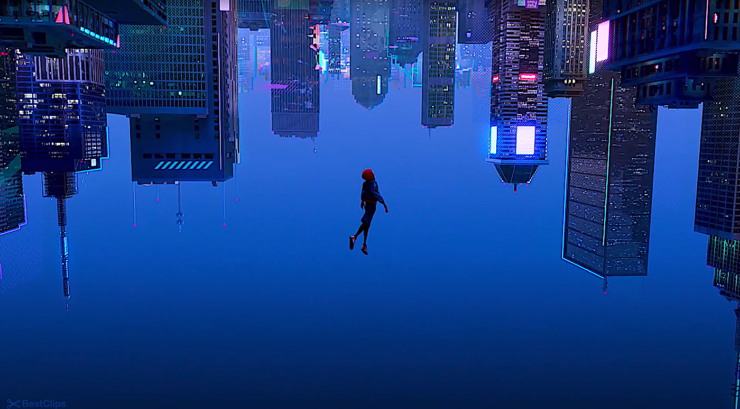
Catalytic Trauma? THE TRAGIC DEATH OF PETER PARKER. Then, later, THE TRAGIC DEATH OF UNCLE AARON.
Moment of Truth: Miles takes his leap of faith.
Even Rocky had a montage: Peter B. Parker teaches Miles how to swing as Octavia chases them, because according to Peter, the best way to learn is when you’re being pursued by a supervillain. Later, Miles customizes his own Spidey suit.
What’s your name, kid? Miles is stepping into a name and an identity and making them his own, just like each of the other Spider-People-and-Pigs.
Quotes: “Anyone can wear the mask.”
Let me be clear: Spider-Man: Into the Spider-Verse is the best comic book movie of all time. If we ever get a movie that tops this one I will go down on one knee and PROPOSE to it. But even so, when I watched it for this post there was much wailing and gnashing of teeth as I debated where to put it as an origin story. Because while Miles’ story is beautiful, it also, at times, becomes a commentary on origin stories (e.g.: Spider-Man Noir literally saying “This is a pretty hardcore origin story” to Miles) which made me debate whether it gets a little too clever at some points. Does the repetition of each Spider-Person’s story detract from Miles’ story, or add to it? Does the fact that his story is woven into the story of Peter Parker’s death and, maybe, Peter B. Parker’s rebirth, overshadow Miles?
But then I rewatched it again (yes, again) and I still cried like a child watching Peter Parker’s funeral, and I had to pause the movie when Stan Lee says “It always fits… eventually” because it still somehow feels like a punch and a hug at the same time, and when Miles takes his leap of faith my mouth fell open like it always does, and that was when it hit me. Yes, this is the greatest origin story. But not even because it’s Miles’ (though it is) and not just because Miles stepping up means that a lot of kids see someone who looks like them become a hero (though that is vitally fucking important) but also because: at the end of the movie, with Brooklyn saved and his friends back home, Miles tells us himself: “Anyone can wear the mask.” This is the story of a wildly diverse group of characters who found themselves with a choice: become heroes, or turn your back on a city that needs you—and each of them chose to be heroes. As this movie makes explicit, no matter who we are, that’s the choice all of us have to make every day.
Put your mask on—it’ll fit eventually—and get to work on your origin story. This world isn’t going to save itself.
Originally published in October 2020.
Going forward, Leah Schnelbach is only eating their jellybeans from martini glasses. Come tell them why this list is wrong about everything on Twitter!










